1 st Reporting

Site Visit Report Template (PDF For Business)
Free site visit reports templates are hard to come by. Intelligent, well-thought-out site visit report templates are a rarity online. Most of the time, you’re stuck with either a) not enough information about a download someone wants you to pay for or b) something so bleak, so bland, that you will need to change half of it to make it reasonably worth its salt.
To lend a mower to this proverbial thicket, we thought we’d do what no one else seems to endeavor to deliver a free site visit report template you can download and start using today . And you won’t get sent to some screen asking for a credit card either. This one is on us.
Before you dive into the download, let’s take a few points and unravel their mystery to ensure we’re on the same page. After all, we were hoping you could make the best use of your site visit reports templates, so it makes sense to communicate how best you might utilize this site reporting tool. Let’s dive in.
Table of Contents
Included In The Site Visit Report Template

Site visits are a common practice in many industries. Some of these industries include:
- Construction
- Project Management
- Property Management
We’ve done our research to set the template, so you’ll find the template valuable and efficient no matter the function. It should work great in Construction, site project management, and also property management endeavors.
Diving into the template, you may notice three primary sections:
- Administrative
- On-Site Report Information
These sections are all very standard and should require no further explanation, save for the central data collection section.
The on-site report information or central data collection section of the site visit report template has five areas:
- Site Conditions – From safety to functionality, the site conditions section allows notation of your findings of the site.
- Current Work In Progress – It holds the details about the work taking place at the time of the site visit, whether on temporary shut down to accommodate for the visit or not.
- Scheduled Work Preparation – It includes the details and information about the following stages and the pre-development on-site to accommodate upcoming steps and processes.
- Observations – Your reporters will include any overall observations, points requiring notes, or other information.
- Additional Report Details – An information overflow section allows you or the reporter to include any other pertinent details about the site visit that were not included in the report. The section can also be used as a supplemental data capture section.
How To Use The Site Visit Report Template
The Site Visit Report Template is an organized slate for your site reporting needs. It is purposefully organized, with room to write observations and details for each of the vital fundamental metrics you’re likely to explore on your site visit.
Step 1 – Download the template.
Step 2 – Print the template.
Step 3 – Complete your report.
It doesn’t get much simpler than that. However, you know that your site visit report will be complex in comparison. We thought sharing six essential tips for a successful site visit process would be of use to aid you in your quest. And without further ado, here are the tips to use with your Site Visit Reports Templates.
6 Essential Tips For Site Visiting and Reporting Success
- Get Tooled Up
One of the best things you can do pre-inspection is to ensure you have the best tools to aid you in your site visit reporting. Now, you could easily download and print the Site Visit Reports Template we’ve provided here; or you could look at using a fully digital solution.
At the very least, you or your appointed reporting staff will likely carry a smartphone with them. Using a digital solution, you can use this device we all carry regardless for the reporting process itself. With digital solutions like what you’re going to find with 1st Incident Reporting’s mobile and customizable app, you can do a lot more than fill out a report on your phone or tablet. We’ll get more to that later.
- Plan It Out
One of the most essential lessons to learn in business management is that appropriate planning saves time, money, and headaches. Preventing disaster is wise by having a well-thought-out plan of attack for your site visit inspection and subsequent reporting.
Break down your site visit into notable segments, and you’ll find you can quickly investigate a segment at a time, then cross it off your list. Segmentation for inspections tends to allow for a more straightforward determination of process faults at the micro-level rather than the macro. It’s also a great way to formulate your plan to complete the site visit efficiently and effectively.
- Watch The Weather
If your operations or those of the site you or your reporter will attend are outside, watching the weather might be as crucial as it would on a day run to take the family to the beach. The weather might play an even more critical role if the site visit itself will hamper outdoor operations.
Similarly, if you are in Canada or one of the Northern United States, where harsh winters are an annual reality, accounting for weather in your plans is something every intelligent manager will do.
- Communicate Intent
Depending on the nature of your site visit, it’s typically a wise and polite idea to communicate your intent to perform a site inspection. It’s essential when you’re looking at a sudden shutdown of operations to accommodate for reporting staff to perform their site visit.
Whether you’re letting the team lead for building materials coordination know or the foundation construction foreman, communicating your intent to perform a site visit is a professional way to move forward. It’s also a great way to build up the people around you by including them instead of excluding them. ( source )
- Coordinate With Teams
You need to coordinate with relevant teams rather than just communicating that you’ll have an on-site inspection site visit completed on a particular date and time. It’s one thing to drop an email or a phone call to let someone know; it’s another thing to invite their active support.
When you coordinate with teams on-site for your site visit, you communicate a powerful message – that teams are stronger when they work together. Consider the ramifications of an unannounced site visit. Staff would be paranoid, on edge, and looking over their shoulder. Although you might increase specific workforce metrics by instilling a culture of fear, you likely won’t get anyone’s best work.
The moral of this short thought was that it usually pays more significant dividends to work with people than against them.
In order to look at things from another perspective, there are cases where you need to communicate your intent to do a site visit for your own safety. Here’s an interesting fact: In 2019, 33% of worker fatalities in road construction sites involved a commercial motor vehicle. There were 250 such deaths that year. ( source )
Sometimes coordinating to shut down a busy vehicular area to allow pedestrian inspectors or management to do a site visit is for everyone’s best interest and safety.
- Don’t Be Afraid
Okay, we aren’t saying you’re a child in a dark room at night during a thunderstorm, not at all. This last tip is perhaps the most essential tip of all because it challenges you to step outside your comfort zone. When we say don’t be afraid, we mean don’t be afraid to ask for help.
The best leaders are those who recognize the limitations of not only the team but of themselves. In placing limitations on our workloads, we limit stress from pushing us to a breaking point.
Given the complexity of many construction projects and other projects that might incur a need for regular site visits and reports, it’s obvious why some companies utilize entire teams for their site and project management.
Never feel afraid to ask for the help of another professional. Managing big projects isn’t easy. It’s okay to ask someone for assistance to help you complete a big or prolonged site visit.
Next Steps: Digitizing Your Site Visit
Okay, so you’ve got your template printed and ready to go, a viable solution to documenting a site visit report. However, would it be easier to carry a tablet you could complete the report on directly, including photos or even video? Or perhaps customizing a report to include a checklist you can check off right on your smartphone as you walk around the site?
With a digital, mobile solution, you have the freedom to come and go into the report as you please. And when the report is complete, the custom notifications can let the right people know the report is complete and ready for sharing.
Automated processes take the guesswork out of remembering to hand in a report. They allow management to immediately take action rather than wait to see a paper report to determine what happened.
Like the 1st Reporting app, a digital solution allows for instant collaboration, so if you need to have one, two, or even several other staff assist in a group site visit, each could contribute on their own device.
Saving you time and money while offering you a secure platform for customizable site reporting is the name of the game here. Find out how turning your site visit reports templates digital can move your business forward.

Join the globally-recognized brands that trust 1st Reporting to safeguard their organizations!
Privacy Overview
Customize your template.
Work with our team of experts to customize our templates to your exact business needs.
- First Name *
- Last Name *
- Phone Number * ✓ Valid number ✕ Invalid number
- Changes Requested
- By submitting your information you agree to receive email marketing and promotional communications from 1st Incident Reporting
- Comments This field is for validation purposes and should be left unchanged.
Free Template Download
- I would like to learn more about a digital solution to manage my reports
- Phone This field is for validation purposes and should be left unchanged.
- Academic Skills
- Reading, writing and referencing
Site visit reports
Key stages of conducting a site visit and reporting your observations and findings.
When you visit a site, company, institution, plant or other location outside the university to observe how your field of study operates in practice, you are often required to write about what you saw. Whether you have to write a standalone report or record your observations for a larger piece of assessment, following the stages below will help you get the most out of your site visit.
Before your visit
Your visit might be the only chance you have to collect information about the site that is not available from other sources.
To prepare for your site visit:
- Review your subject material in the LMS and your notes, and brainstorm what you already know about the site.
- Do some preliminary research about the site in relevant library databases and online, so you know what information is already available in published sources.
- Make a list of the information you think you need to collect at the site.
- Prepare questions to ask staff at the site, if they will be available.
Collate the materials you will need to refer to at the site, e.g. your task brief, list of information to collect and questions, in a format you can access easily while on the move. Ensure that you have a reliable way to take notes, and that your phone has plenty of charge for taking photos.
A notebook or document with prepared headings makes it easy to record the information you need. You should also make sure you:
- Complete any forms or health and safety requirements for your subject.
- Know how to get to the site, and who to contact if you are delayed.
- Wear clothing that is appropriate to the site conditions and the weather.
During your visit
To maximise the information you gather:
- Take notes of any impressions or observations you have, of all aspects of the visit, under subheadings. Extra notes can help you recall important details you may not have realised were relevant at the time.
- Record voice messages or memos of insights as they happen to avoid having to rely on your memory.
- Take photos from different perspectives. If you need to include images in your assessment, you will be glad you have a range to choose from. You may not have a chance to return to the site to take more photos if you missed something important on the day.
- Ask questions when you have the opportunity. If you meet any staff at the site, they are likely to expect you to ask questions and are usually happy to answer.
Gathering as much information as possible during the site visit will give you a wider range of material to draw from when you are preparing your report or assessment, and you will be able to produce a more accurate and polished piece of work.
Sections of a site visit report
Site visit reports may vary from subject to subject, so you should always check the information you’ve been given in your assessment brief or in other subject material. If your site visit report contains the following features, these explanations may help you gain a sense of the purpose of various sections:
Include the title of the visit or project, name of the site, the date of the site visit, and your name and student number. You may also need to include your tutor’s name, your tutorial group, or your team members for group assignments.
An executive summary is a condensed version of the whole report. It typically contains a few sentences on the background and location of the site, the purpose of the report, a statement about what was observed, and a few sentences that offer a conclusion or recommendations.
The introduction of the report should set the context for the level of observation conducted on the site visit. Include the importance of what is being observed and what you can learn from those observations. This might be, for example, to address a problem or provide a solution in another location.
This section is highly dependent on your context. It may involve explaining procedures and processes, such as chemical processes, construction, or commercial operations of a plant, or how certain features of the site are arranged.
In the final section, you should sum up the key findings from the site visit and comment on the implications of these findings, and you may also give recommendations if that is appropriate to the task. If you are required to reflect on your experience, try and make connections between what you have observed at the site and what you have learned in your subject.
Provide references to literature and published sources if you are required to integrate these into your site visit report.
Write up your findings as soon as possible after your site visit. The sooner you write your report, the more you’ll remember.
Reflection / Observation
If you are asked to write a reflection of your visit, try to:
- Make links between theory and practice, i.e. what you’ve been doing in your subject, what you’ve read, any previous professional experience you have in the field and the practices you observed at the site.
- Demonstrate in your reflection that you understood the most important features of the site.
- Evaluate and discuss the relative strengths and weaknesses of the processes and procedures you observed (e.g. technology, efficiency).
A site visit is far more than an excursion or trip. It is an excellent opportunity to gain insights into how your area of study operates in practice, and if you adequately prepare to collect extensive information during your visit, you will be able to produce a higher quality report or assessment as well.

Looking for one-on-one advice?
Get tailored advice from an Academic Skills Adviser by booking an Individual appointment, or get quick feedback from one of our Academic Writing Mentors via email through our Writing advice service.
Go to Student appointments
- PRO Courses Guides New Tech Help Pro Expert Videos About wikiHow Pro Upgrade Sign In
- EDIT Edit this Article
- EXPLORE Tech Help Pro About Us Random Article Quizzes Request a New Article Community Dashboard This Or That Game Popular Categories Arts and Entertainment Artwork Books Movies Computers and Electronics Computers Phone Skills Technology Hacks Health Men's Health Mental Health Women's Health Relationships Dating Love Relationship Issues Hobbies and Crafts Crafts Drawing Games Education & Communication Communication Skills Personal Development Studying Personal Care and Style Fashion Hair Care Personal Hygiene Youth Personal Care School Stuff Dating All Categories Arts and Entertainment Finance and Business Home and Garden Relationship Quizzes Cars & Other Vehicles Food and Entertaining Personal Care and Style Sports and Fitness Computers and Electronics Health Pets and Animals Travel Education & Communication Hobbies and Crafts Philosophy and Religion Work World Family Life Holidays and Traditions Relationships Youth
- Browse Articles
- Learn Something New
- Quizzes Hot
- This Or That Game
- Train Your Brain
- Explore More
- Support wikiHow
- About wikiHow
- Log in / Sign up
- Education and Communications
- Official Writing
- Report Writing
How to Write a Visit Report
Last Updated: March 30, 2024 References
This article was co-authored by Madison Boehm . Madison Boehm is a Business Advisor and the Co-Founder of Jaxson Maximus, a men’s salon and custom clothiers based in southern Florida. She specializes in business development, operations, and finance. Additionally, she has experience in the salon, clothing, and retail sectors. Madison holds a BBA in Entrepreneurship and Marketing from The University of Houston. This article has been viewed 663,946 times.
Whether you’re a student or a professional, a visit report helps you document the procedures and processes at an industrial or corporate location. These reports are fairly straightforward. Describe the site first and explain what you did while you were there. If required, reflect on what you learned during your visit. No additional research or information is needed.
Writing a Visit Report
Explain the site's purpose, operations, and what happened during the visit. Identify the site's strengths and weaknesses, along with your recommendations for improvement. Include relevant photos or diagrams to supplement your report.
Describing the Site

- Reports are usually only 2-3 pages long, but in some cases, these reports may be much longer.
- In some cases, you may be asked to give recommendations or opinions about the site. In other cases, you will be asked only to describe the site.
- Ask your boss or instructor for models of other visit reports. If you can't get a model, look up samples online.

- If you visited a factory, explain what it is producing and what equipment it uses.
- If you visited a construction site, describe what is being constructed and how far along the construction is. You should also describe the terrain of the site and the layout.
- If you’re visiting a business, describe what the business does. State which department or part of the business you visited.
- If you’re visiting a school, identify which grades they teach. Note how many students attend the school. Name the teachers whose classes you observed.

- Who did you talk to? What did they tell you?
- What did you see at the site?
- What events took place? Did you attend a seminar, Q&A session, or interview?
- Did you see any demonstrations of equipment or techniques?

- For example, at a car factory, describe whether the cars are made by robots or humans. Describe each step of the assembly line.
- If you're visiting a business, talk about different departments within the business. Describe their corporate structure and identify what programs they use to conduct their business.
Reflecting on Your Visit

- Is there something you didn’t realize before that you learned while at the site?
- Who at the site provided helpful information?
- What was your favorite part of the visit and why?

- For example, you might state that the factory uses the latest technology but point out that employees need more training to work with the new equipment.
- If there was anything important left out of the visit, state what it was. For example, maybe you were hoping to see the main factory floor or to talk to the manager.

- Tailor your recommendations to the organization or institution that owns the site. What is practical and reasonable for them to do to improve their site?
- Be specific. Don’t just say they need to improve infrastructure. State what type of equipment they need or give advice on how to improve employee morale.
Formatting Your Report

- If you are following a certain style guideline, like APA or Chicago style, make sure to format the title page according to the rules of the handbook.

- Don’t just say “the visit was interesting” or “I was bored.” Be specific when describing what you learned or saw.

Sample Visit Report

Community Q&A
You Might Also Like

- ↑ http://services.unimelb.edu.au/__data/assets/pdf_file/0010/471286/Site_Reports_for_Engineers_Update_051112.pdf
- ↑ https://www.examples.com/business/visit-report.html
- ↑ https://www.thepensters.com/blog/industrial-visit-report-writing/
- ↑ https://eclass.aueb.gr/modules/document/file.php/ME342/Report%20Drafting.pdf
About This Article

To write a visit report, start by including a general introduction that tells your audience where and when you visited, who your contact was, and how you got there. Once you have the introduction written out, take 1 to 2 paragraphs to describe the purpose of the site you visited, including details like the size and layout. If you visited a business, talk about what the business does and describe any specific departments you went to. Then, summarize what happened during your visit in chronological order. Make sure to include people you met and what they told you. Toward the end of your report, reflect on your visit by identifying any strengths and weaknesses in how the site operates and provide any recommendations for improvement. For more help, including how to format your report, read on! Did this summary help you? Yes No
- Send fan mail to authors
Reader Success Stories
Betty Tarutia
Jul 9, 2020
Did this article help you?
Jayani Rathnayake
Aug 6, 2019
Jun 13, 2019
Atremedaki Phawa
Aug 19, 2019

Featured Articles

Trending Articles

Watch Articles

- Terms of Use
- Privacy Policy
- Do Not Sell or Share My Info
- Not Selling Info
wikiHow Tech Help Pro:
Level up your tech skills and stay ahead of the curve

Free Site Analysis Checklist
Every design project begins with site analysis … start it with confidence for free!
Site Visit Analysis and Report: How to conduct and evaluate your first architecture site visit
- Updated: January 2, 2024
Here we will cover everything you need to know about of how to approach your first site visit analysis for a new project, what to do when physically there, and how to eventuate and summarize the information you collect.
However before visiting for the first time we highly recommend that you carry out desktop study beforehand, as this will provide an important initial understanding of the site and generate far better results and more refined questions once there.
The desktop study will also help to identify the important items of equipment that you will need to take with you to make your trip as successful as possible. …these are mentioned below but may include a:
- Site map (very important)
- Tape measure
- Laser distance meter
…more essential architects items here

Conducting an architecture site visit analysis
A site visit analysis is a comprehensive report that summarizes the findings of a physical inspection of a potential development site. It includes information on the site’s physical characteristics, location, surrounding area, demographic information, environmental impact, zoning regulations, traffic flow, and recommendations for development.
The report synthesizes all gathered information to provide a comprehensive understanding of the site and its potential.
What to look for?
Once there, there are a whole number of important areas and items that need to be studied and recorded, some of which would have already been identified during your desktop study, but as a starting point we’ve produced the below list of all the key areas:
We suggest that you take these with you and tick them off as they are found, so not to miss anything.
- Entrance and access points (both pedestrian and vehicle)
- Security (gates, surveillance)
- Travelling to the site (road types and suitability, safety, public transport)
- Boundary treatment (fencing, vegetation, land form, water)
- Extent of boundary (does it match the survey/OS map)
- Circulation (existing travel routes within the site)
- Noise levels (quiet and loud areas)
- Services (electric, gas, water, sewage)
- Existing buildings (condition? Relevant? Protected?)
- Existing landscape features (condition? Relevant? Protected?)
- Neighbouring buildings (local vernacular, protected?)
- Views in and out of the site (areas to screen off and areas to draw attention to)
- Tree’s and vegetation (protected and rare species)
- Ecology (any areas likely to be home to protected species)
- Orientation (sun and wind paths)
- Light levels (areas in direct sunlight, shaded areas, dappled light)
- Accessibility (disability access)
- Surrounding context (historical, heritage, conservation area, SSSI, AONB)
- Existing materials in and around the site
- Topography (site levels)
- Flood level (is it likely to flood)
- Soil and ground conditions (types and suitability)
- Existing legal agreements (where are the rights of way, covenants)
- Hazards (Electricity lines, Drainage, Telephone lines, Sub-stations)
We provide a site analysis checklist here covering all of the above that’s free to download.

Where to start
You want to begin documenting your visit as soon as you arrive, as the approach and entrance to your site are just as important as the site itself. If you’re desktop study didn’t highlight the possible routes and methods of transport to and from the site, then this needs to be recorded also.
Documenting your first impressions is vitally important, ask yourself; what do you see as you enter the site? what do you hear? what do you feel? (…what senses are the first to be triggered), you will only get one chance to do this properly and so you need to make it count!
…and don’t forget to include the location of the elements you record, when noting it down on your site map or survey. By the end of your visit, you should barley be able to read whats under all your notes …write down everything!
Moving on from first impressions, you should plan to walk around the site as least twice (as a minimum) to ensure that nothing is missed, so leave enough time to make a least two loops, noting down and photographing everything that you feel is relevant, no matter how small.
…there’s nothing worse than getting back to the studio and realizing you forgot to document something.
We like to use the check list supplied above and:
- Firstly walk around the site whilst annotating a site plan
- Secondly with a camera …photographing everything
- and thirdly with both …just in case something has been missed
This way we can focus on one task at a time, helping to ensure we gather everything we need.
In terms of a camera, and depending on your budget we suggest looking one these three options (but a phone is just as good):
- Sony DSCW800 Digital Compact Camera
- Sony DSCWX350 Digital Compact Camera
- Canon EOS 1300D DSLR Camera
It can be difficult to identify certain elements, and some may only be noticeable from a professional survey, such as underground services and precise spot levels. But approximations of such locations and heights are a good start and can serve as a reminder for further investigation.
If accessible you can of course take your own measurements and so this is where a tape measure and/or distance meter will come in handy.
Try one of these:
– Tape measure
– Laser distance meter
What to take with you
Firstly look at the weather, you wont have a good time if your not dressed appropriately, and this applies to protecting your notes and equipment as well as yourself.
…a simple quick check, can make or break a visit, arranging to go on sunny day will also give you the best site photographs, which could also be used in future CGI’s and presentation material.
If the site is derelict, or has potentially dangerous or hazardous elements, it is likely that you will require personal protection equipment (otherwise known as PPE) so make sure this is organised before setting off.
As a minimum you want to take with you a camera, a pen and an OS map. Google Maps can provide a temporary (though very basic) version, but a much preferred scaled version that can normally be obtained through your university or practice via such companies as:
- Digimap – digimap.edina.ac.uk
- Xero CAD – xerocad.co.uk
- CAD Mapper – cadm a pper.com (free account available)
As mentioned, you will want to make notes, and record everything you observe, experience and hear all over this map. So print out a couple of copies at a usable and convenient size.

A camera is essential in documenting the site, and the pictures taken during your visit are likely to be used on a daily basis throughout your project. So once again make sure you document and record everything.
Pictures should be taken from all distances, close zoomed-in sections of materials and textures along with shots of the site from a distance to include the area as a whole and within its context.
Note pads are important for obvious reasons, we prefer an A5 sized pad, as this is much easier to carry and hold than an A4 one.
Tape measures can be useful, but we never go on a site visit without a distance meter.
…and lastly if you’re visiting on your own, don’t forget to tell someone where you’ll be and take your phone with a charged battery.
Our site visit equipment check list looks something like this:
- Weather check
- Print out our “what to look for” checklist
- Site map (at least 2 copies)
- PPE equipment
- Scale ruler
If you are interested in trying our architecture site analysis symbols for your own site analysis recordings and presentation, then head over to our shop ( Here ).
FAQ’s about site visit analysis
What is included in a site analysis.
As discussed above, site analysis typically includes the following elements:
- Site location and context: Understanding the location of the site in relation to the surrounding area, including climate, topography, neighboring buildings, and accessibility.
- Physical characteristics: Examining the site’s physical features, such as its size, shape, soil type, vegetation, and water sources.
- Utilities and infrastructure: Assessing the availability of utilities such as electricity, water, gas, and sewer, as well as the infrastructure, such as roads and transportation.
- Environmental considerations: Analyzing the site’s potential environmental impact and assessing any potential hazards, such as flooding or soil stability.
- Zoning and land-use regulations: Reviewing the local zoning and land-use regulations to determine the types of uses and development allowed on the site.
- Cultural and historical context: Examining the cultural and historical significance of the site and its surrounding area.
- Demographic information: Analyzing the demographic information of the surrounding area, including population, income, and age.
- Traffic and pedestrian flow: Studying the flow of vehicular and pedestrian traffic in the area to understand the impact on the site.
This information is used to inform the design of a building or development project, taking into account the unique characteristics and constraints of the site.
What are the steps of site analysis?
including the above, the steps involved in conducting a site analysis report typically include:
- Data Collection: Gather data and information about the site, including maps, aerial photos, zoning regulations, environmental reports, and other relevant documents.
- Site Observations: Conduct a site visit to observe and document the site’s physical and environmental conditions, such as topography, vegetation, water sources, and neighboring buildings.
- Context Analysis: Analyze the site’s location and context, including its surrounding area, access to transportation, and cultural and historical significance.
- Demographic Analysis: Study the demographic information of the surrounding area, including population, income, and age, to understand the potential market for the development project.
- Traffic and Pedestrian Flow Analysis: Study the flow of vehicular and pedestrian traffic in the area to understand the impact on the site.
- Synthesis: Synthesize the information gathered in the previous steps to develop a comprehensive understanding of the site and its potential.
- Recommendations: Based on the analysis, make recommendations for the development of the site, taking into account the unique characteristics and constraints of the site.
These steps help architects and planners to gain a deeper understanding of the site and to make informed decisions about the design and development of a building or project.
Every design project begins with site analysis … start it with confidence for free!.
Leave a Reply Cancel reply
You must be logged in to post a comment.
As seen on:

Unlock access to all our new and current products for life .
Providing a general introduction and overview into the subject, and life as a student and professional.
Study aid for both students and young architects, offering tutorials, tips, guides and resources.
Information and resources addressing the professional architectural environment and industry.
- Concept Design Skills
- Portfolio Creation
- Meet The Team
Where can we send the Checklist?
By entering your email address, you agree to receive emails from archisoup. We’ll respect your privacy, and you can unsubscribe anytime.
All Formats
Report Templates
18+ site visit report templates.
There may come a time when you are tasked with visiting a particular industrial site to assess and gather as much information as you can regarding its operation, architecture, procedure, observation, management, safety, engineering, property, and current state. Should that happen, then what you will want to make after the technical assessment would be a site visit report . A field visitation or visit report is suitable for a contractor service, civil engineering, HR management, IT development, hospital visit, internship program sample, and much more. This article will teach you all that you need to know to make one using Apple Pages Format, MS Excel Formats , and other platforms.
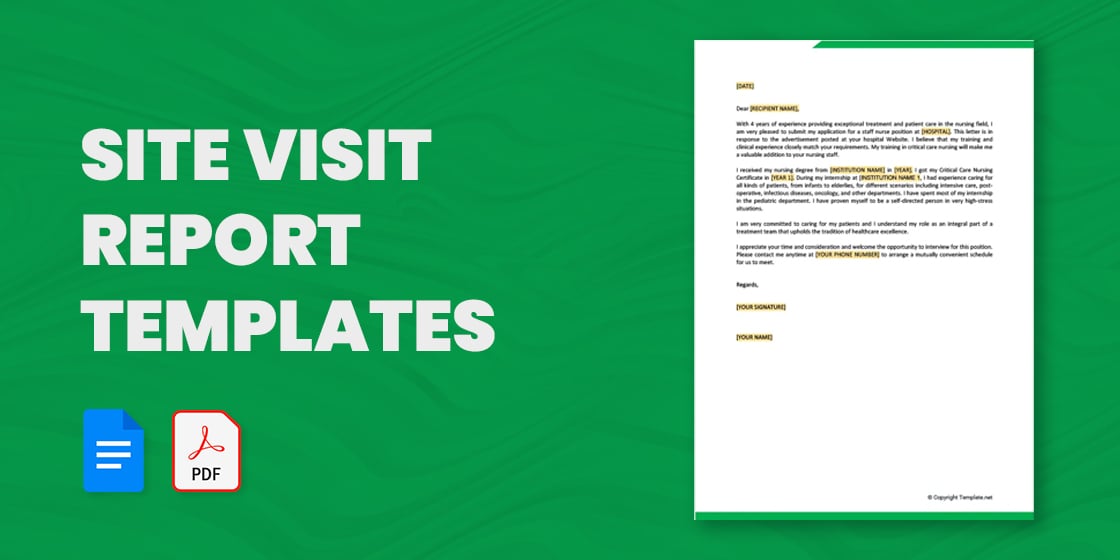
6 Steps for Creating a Site Visit Report
Step 1: start with the general information, step 2: define the site and its purpose, step 3: explain the sequence of events, step 4: summarize the site operations, step 5: identify the site’s strengths and weaknesses, step 6: make your conclusion and provide suggestions, 9+ site visit report templates, 1. free site visit report template.

- Google Docs
Report Template Bundle
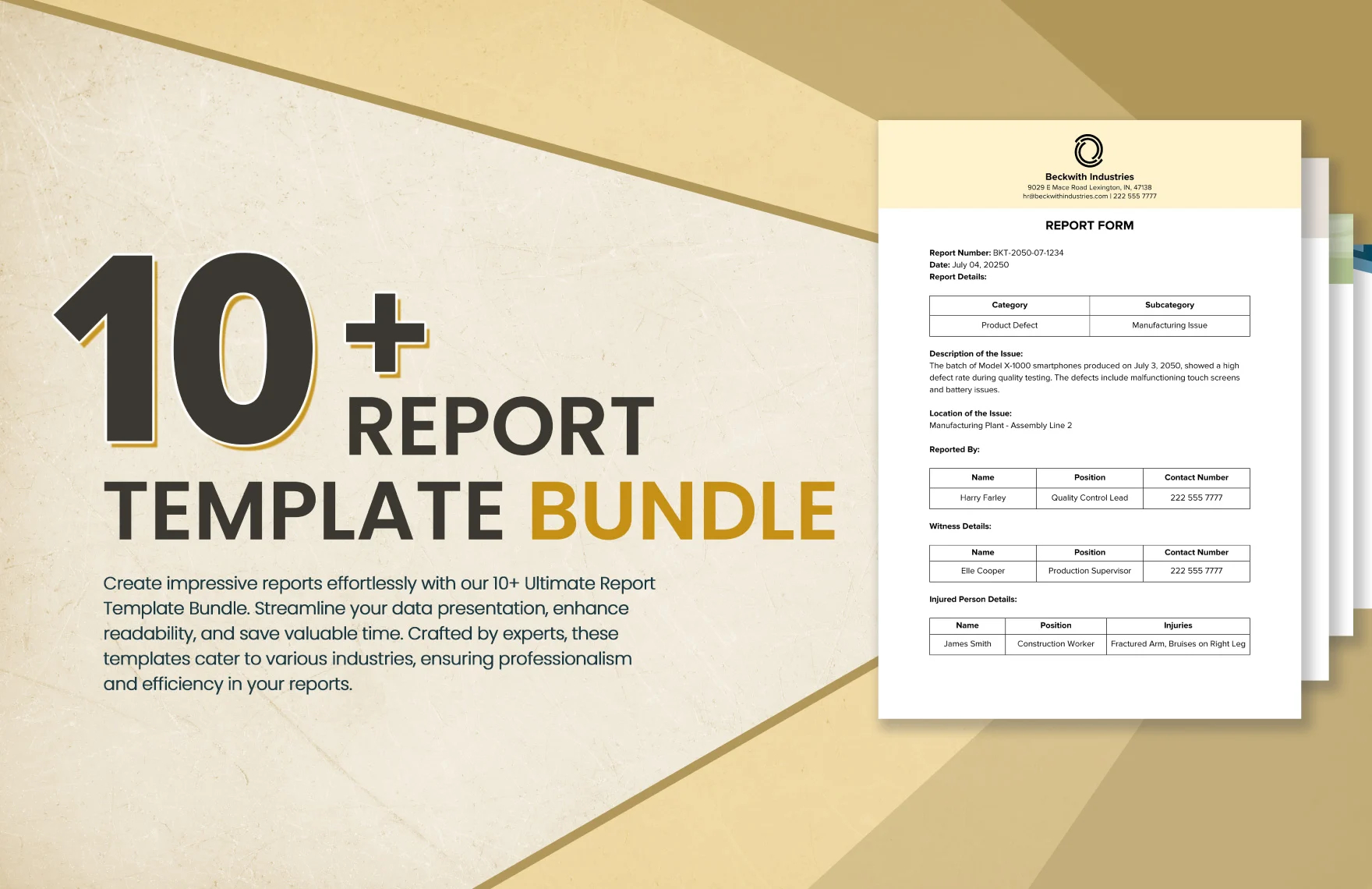
2. Site Visit Report Format Template
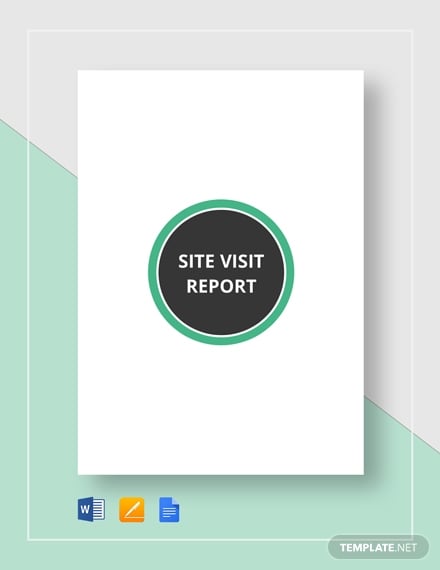
3. Site Visit Report Format For Construction Site

4. Site Visit Report Template Word
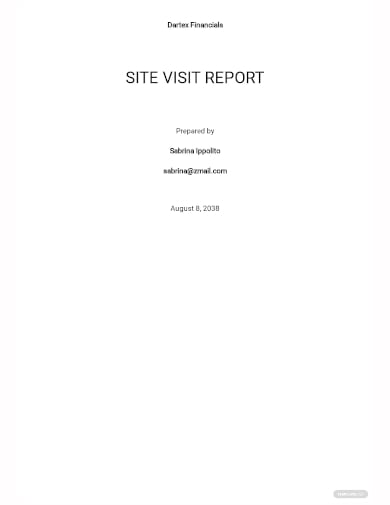
5. Project Site Visit Report Format
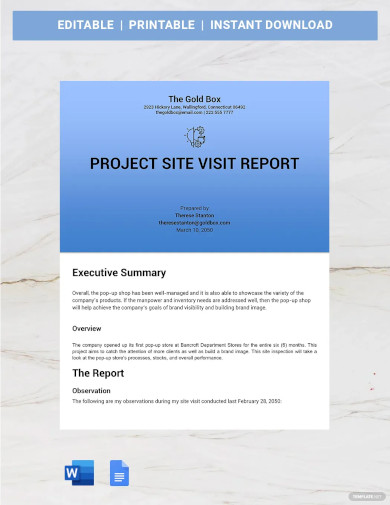
6. IT Site Visit Report Template

7. Site Visit Summary Report Template
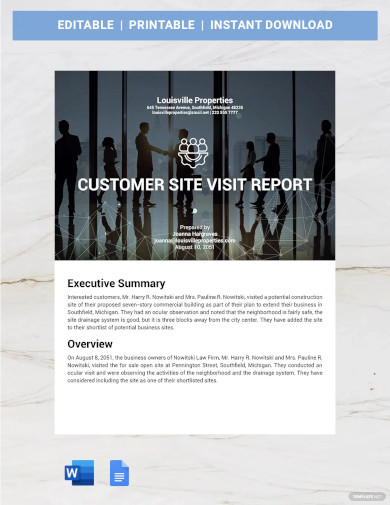
8. Site Visit Report Example
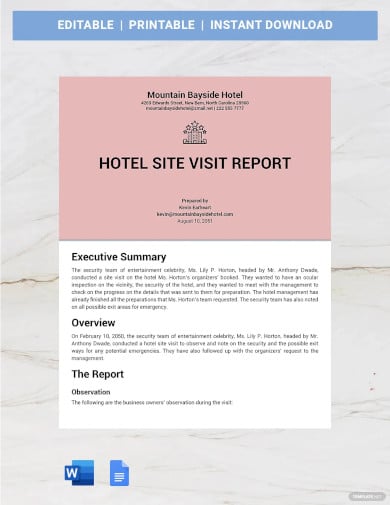
9. Site Visit Report Sample
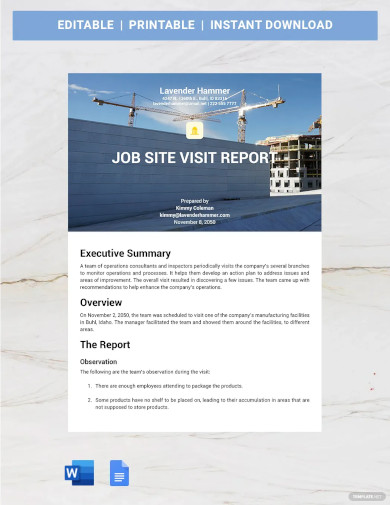
10. How To Write A Site Visit Report

11. Technical Site Visit Report Template
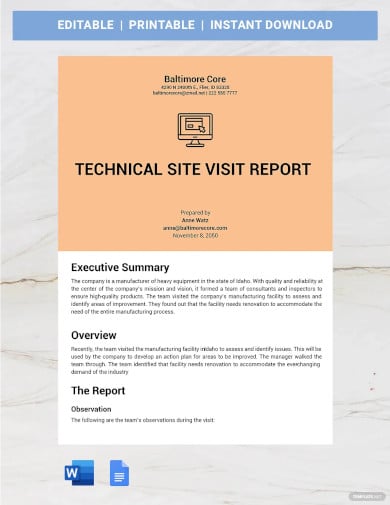
12. Visit Report Format
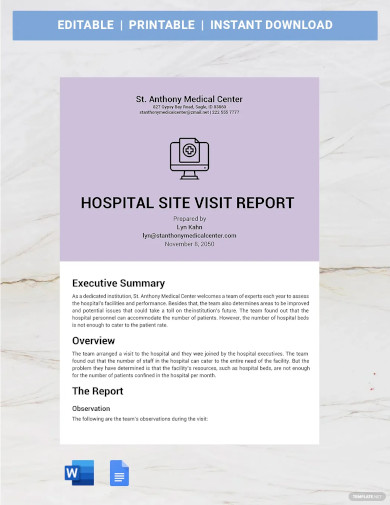
13. Security Site Visit Report Template
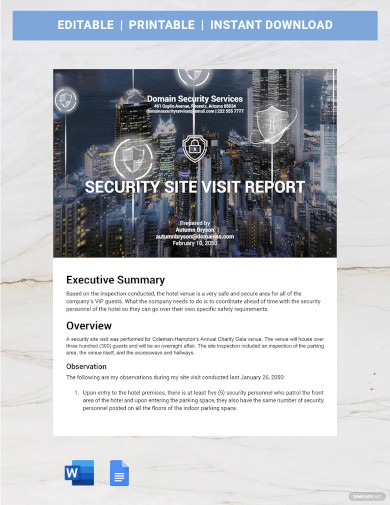
14. Site Visit Report Sample PDF
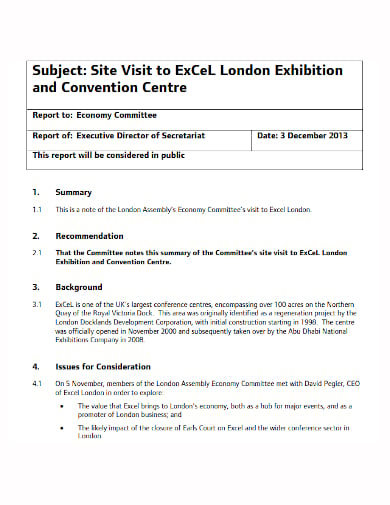
15. Contractor Observation Site Work Visit Report Template
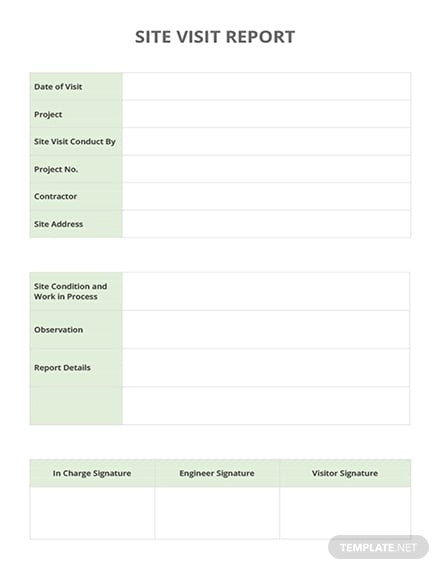
- Editable PDF
16. Site Visit Report Format For Engineers
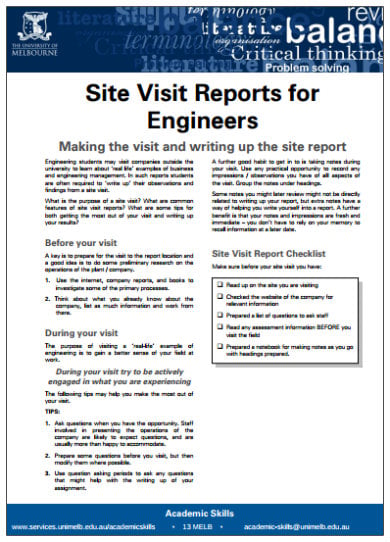
17. Free Field Visit Report Format In Word
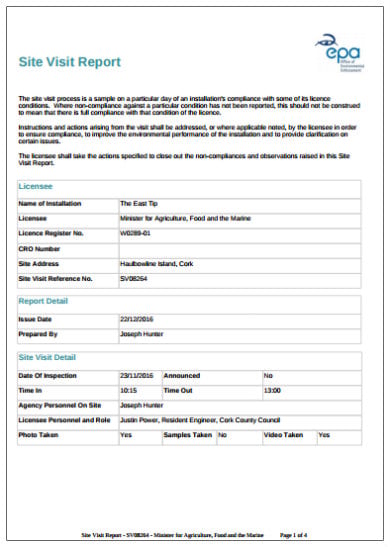
18. Free Industrial Property Supplier Site Visit Report
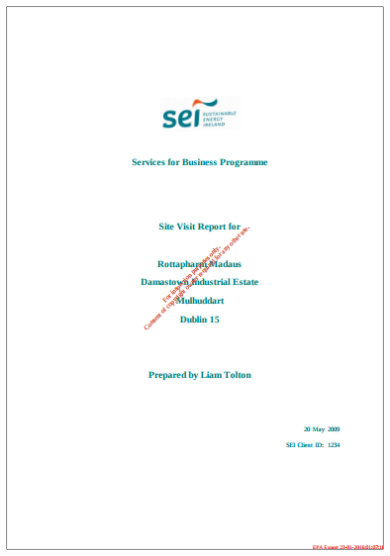
19. Free Project Client Site Visit Report in PDF Format
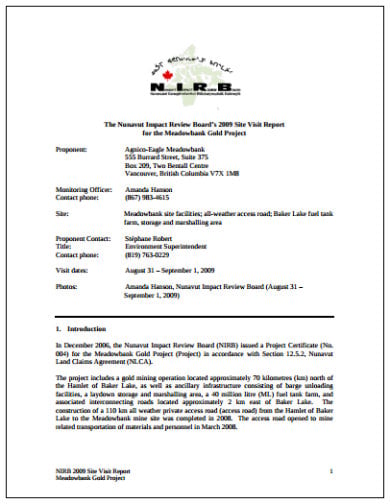
More in Report Templates
Construction site visit report template, customer site visit report template, hotel site visit report template, sales site visit report template, job site visit report template, technical site visit report template, hospital site visit report template, it site visit report template, security site visit report template, consultant site visit report template.
- How to Create a Financial Audit Report [10+ Templates to Download]
- 40+ Monthly Management Report Templates in PDF | Google Docs | Excel | Apple Pages
- 25+ Non Conformance Report Templates – PDF, Docs, Word, Pages
- 19+ Event Report Templates – Word, PDF, Docs, Pages
- 34+ Report Card Templates- Word, Docs, PDF, Pages
- 23+ Sample Inspection Report Templates- Docs, Word, Pages
- 36+ Weekly Activity Report Templates – PDF, Docs
- 10+ Free Audit Findings Report Templates in PDF | MS Word
- 10+ Audit Exception Report Templates in PDF | MS Word
- 11+ Audit Committee Report Templates in PDF | MS Word
- 6+ Logistics Audit Report Templates in PDF | MS Word
- 11+ Logistic Report Templates in PDF
- 8+ Logistics Monthly Report Templates in PDF | MS Word
- 17+ Internship Student Report Templates
- 64+ Monthly Report Samples
File Formats
Word templates, google docs templates, excel templates, powerpoint templates, google sheets templates, google slides templates, pdf templates, publisher templates, psd templates, indesign templates, illustrator templates, pages templates, keynote templates, numbers templates, outlook templates.

- Team Members
- Justice, Equity, Diversity, and Inclusion (JEDI) Statement
- Focus Areas
- Our Approach
- Clients and Funders
- Join Our Team
- Research and Evaluation
- Evaluation Capacity Building
- 10 Steps to Creating an Infographic
- Mindful Leadership
An Evaluator’s Guide to Performing Successful Site Visit Observations
For external evaluators, site visits (e.g. visiting schools) provide an opportunity to experience the activity, program, or product first-hand while also offering a chance to connect in-person with participants from a study. As these observations provide an important addition to report findings, Magnolia Consulting follows several steps for successfully navigating site visit observations. Based on our experience, here are five key guidelines for successful site visit observations:
- Conduct an in-person study orientation. Conducting an in-person study orientation before site visits offers the opportunity to meet and interact with participants, which helps to establish a trusting relationship. Having a positive rapport with participants is important as it allows for open communication and can help reduce any participant concerns associated with site visit observations. During the study orientation, inform participants of details about the purpose of the site visits, expectations for participation, and how site visits will be scheduled to minimize disruption in the classroom. During the orientation, explain how the data will be used and how evaluators will maintain participant confidentiality. If the budget does not allow for an in-person orientation, webinars with video access are also a helpful tool to introduce yourself to the participants.
- Create an observation protocol. Using an observation checklist or protocol helps to reduce bias associated with observations and assures that preestablished guidelines are followed. These protocols typically focus on the quality and extent to which an activity, program, or product is implemented and/or aligned to best instructional practices in the field (i.e., reading instruction, STEM). If multiple evaluators perform observations across participants or sites, the measure should be checked across observers for agreement and accuracy.
- Enlist a site coordinator . If budget allows, plan for having an on-site coordinator who knows the site’s participants and inner workings. This individual can communicate with the evaluation team’s program coordinator on details throughout the study such as scheduling observations across multiple participants at the site. Furthermore, the site coordinator can communicate details with participants before the observation and answer any questions that arise. In addition to coordinating site visit observations, the site coordinator might be responsible for other helpful tasks such as managing consent forms and ensuring assessments are distributed and returned in an organized manner.
- Be flexible with scheduling. Allowing flexibility and accommodating a site’s scheduling needs supports understanding and recognition of “real world” complications. If possible, create a schedule that follows the site’s established routines. This may require conducting observations across several days rather than consolidating multiple sessions into a shorter timeframe. If the evaluation budget is limited and requires observations to be performed within a brief period, work with the site coordinator to determine another mindful, yet suitable schedule. If appropriate, send participants a direct email one week prior to the visit restating the purpose of the observation and confirming the schedule. This can help avoid an observation from being unannounced.
Share This Story, Choose Your Platform!
About the author: molly henschel.

CC0006 Basics of Report Writing
- Structure of a report (Case study, Literature review or Survey)
- Structure of report (Site visit)
Structure of a report (Site visit)
- Citing Sources
- Tips and Resources
A site visit methodology may look like this: you visit a site for a limited period of time and gather information through your own experience or through the reported experiences of others in order to find the answer to your research question. In addition to observation, interviews can also be employed to gather information.
For example, a site visit to clean energy buildings and conduct an analysis of the associated technology / policy approaches. Add a section on the feasibility of more such buildings, compare it with other such buildings across the world, etc.
The report structure of a site visit based project is slightly different from that of a case study. literature review or survey.
Structure of a report for the site visit method is as follows.
- Table of Contents
- Summary / Abstract
- Introduction
- Literature Review
- Information about the site(s)
- Field Observations
- Reflection of visit experience and Implication(s)
- Discussion and Limitation(s)
- Conclusion and Recommendations
- Appendix (if necessary/any)
Please access Structure of a report (Case study, Literature review or Survey) to know more about other sections.
- << Previous: Structure of a report (Case study, Literature review or Survey)
- Next: Citing Sources >>
- Last Updated: Jan 12, 2024 11:52 AM
- URL: https://libguides.ntu.edu.sg/report-writing
You are expected to comply with University policies and guidelines namely, Appropriate Use of Information Resources Policy , IT Usage Policy and Social Media Policy . Users will be personally liable for any infringement of Copyright and Licensing laws. Unless otherwise stated, all guide content is licensed by CC BY-NC 4.0 .
- Visit Report
Visit Report Format
Visit report samples, what is visit report, the basic format of a visit report, how to write a proper visit report, what are some examples of a visit report, how many pages does a visit report have, what is a trip report memo, how do you write a visit report, what is included in a site visit report, how to prepare a site visit report, how to prepare for a customer visit, what should a report include, what is a customer visit report, how do i end a report, what is the summary of the activity report, what does a report look like, what is the objective of a site visit report.

1. Title Page
- Organization Name
- Visitor’s Name
- Date of Visit
2. Introduction
- Purpose of Visit
- Location of Visit
3. Details of the Visit
- Activities Undertaken
- Observations
4. Findings
- Summary of Observations
- Key Points Noted
5. Conclusion
- Summary of Visit
- Recommendations
6. Appendices (if any)
- Additional Documents
- Photographs
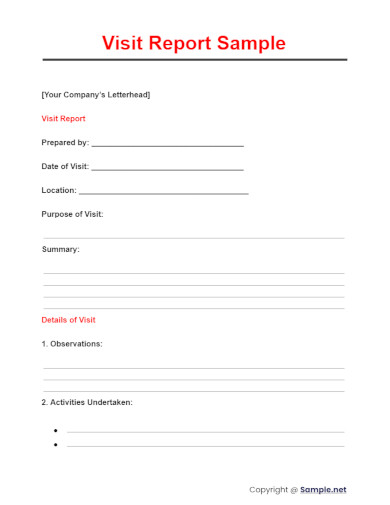
Visit Report Sample
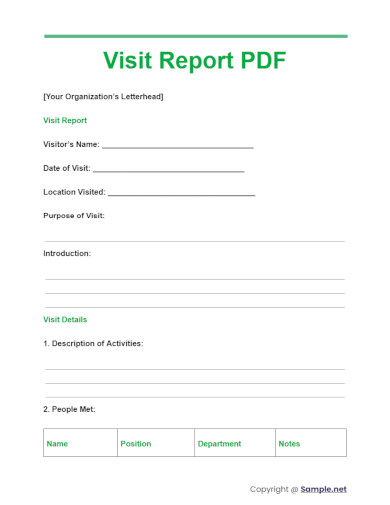
Visit Report PDF
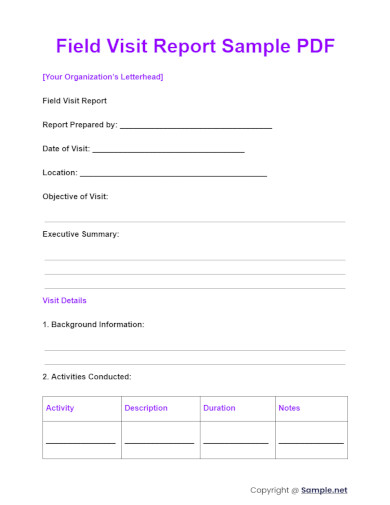
Field Visit Report Sample PDF
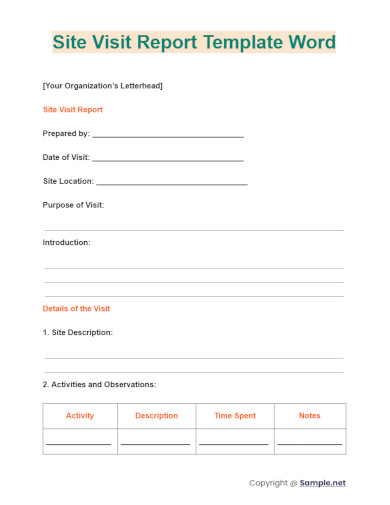
Site Visit Report Template Word


Visit Report Template
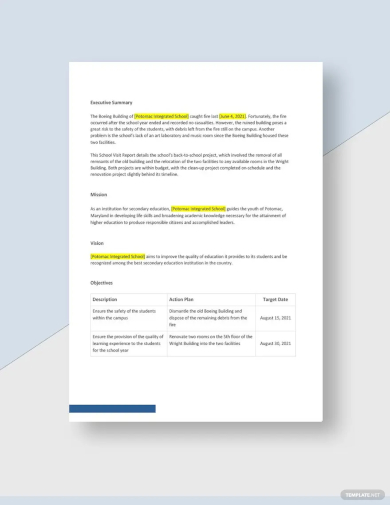
Sample School Visit Report
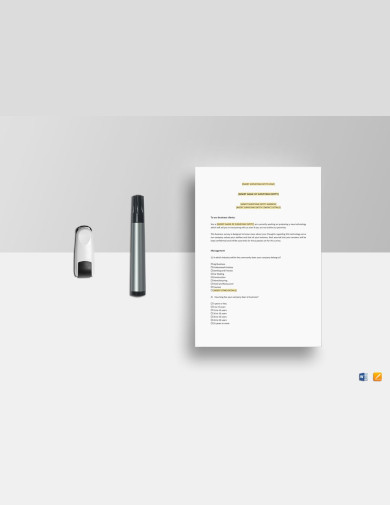
Customer Visit Report Template
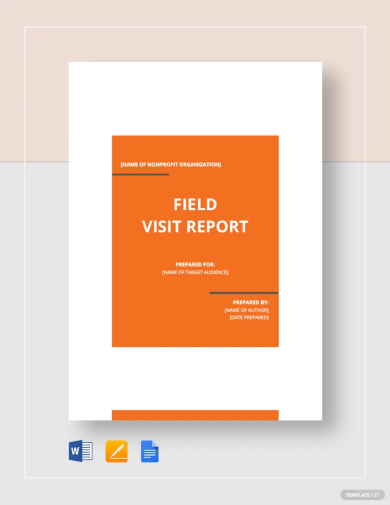
Field Visit Report
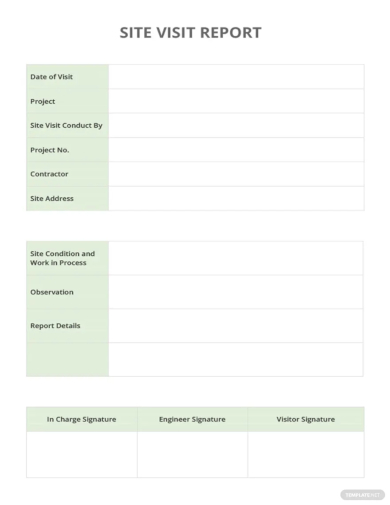
Sample Site Visit Report

Customer Visit Report Outline
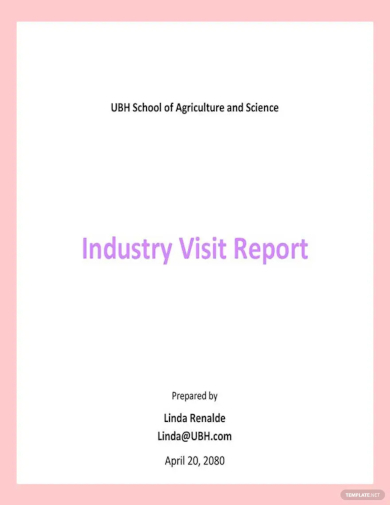
Sample Industry Visit Report
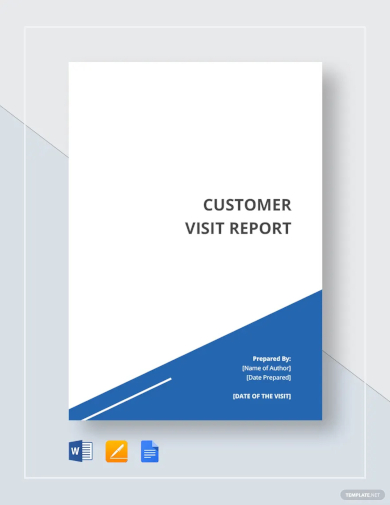
New Customer Visit Report Template
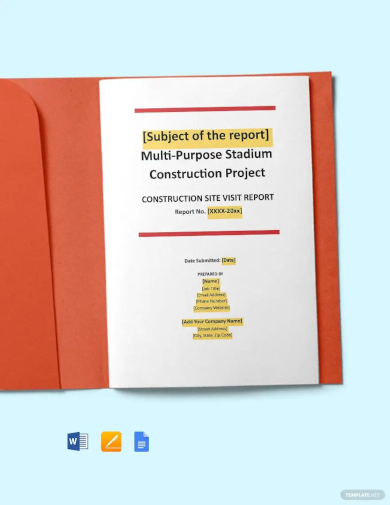
Construction Site Visit Report
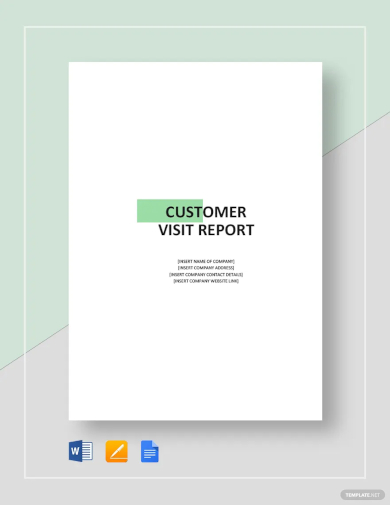
Sample Customer Visit Report

Free School Visit Report Template

Sample Official Overseas Visit Report
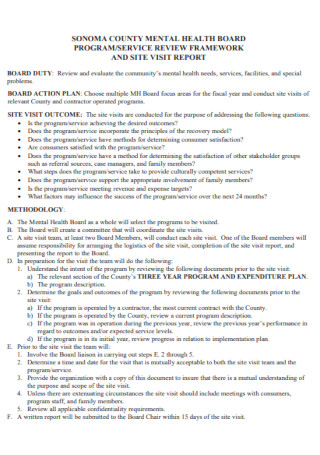
Weekly Site Visit Report
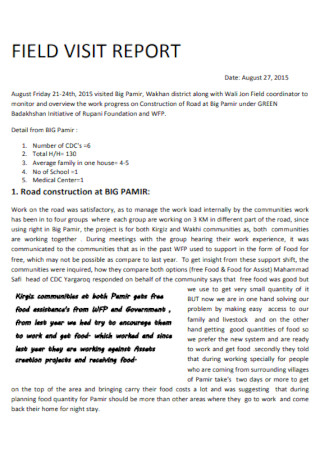
Project Field Visit Report
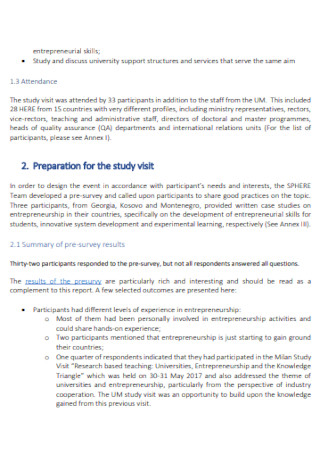
Recommendation Study Visit Report

Observation Site Visit Reports for Engineers

Simple Industrial Visit Report
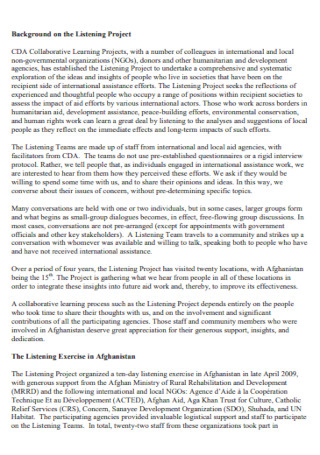
School Lab Visit Analysis Report
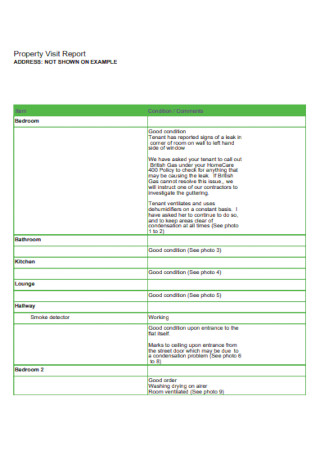
Building Construction Property Visit Report
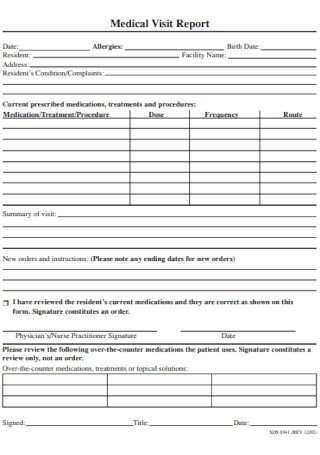
Medical College Visit Report
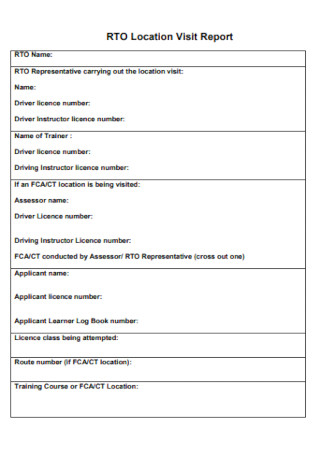
Sample Location Visit Report
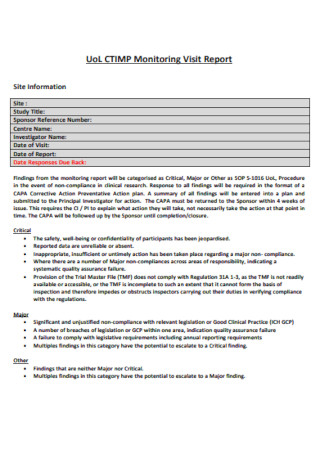
Monitoring Visit Report Summary
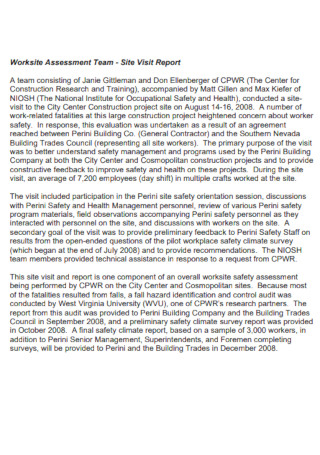
Marketing Team Site Visit Report

School Academic Visit Report Template
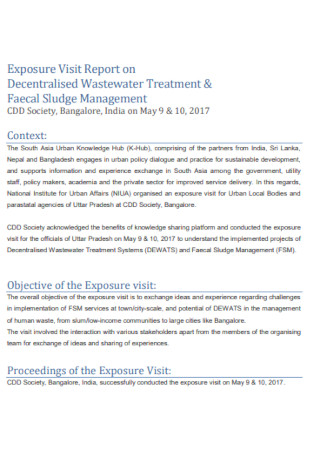
Chemical Exposure Visit Report
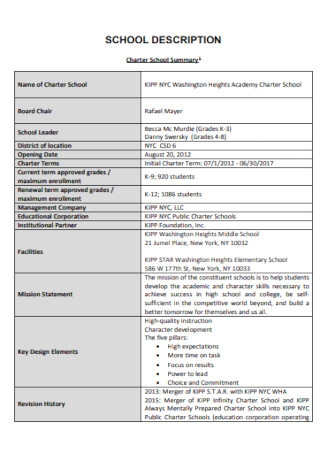
Business Renewal Site Visit Report
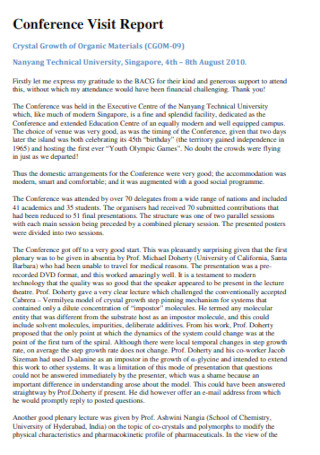
Management Conference Visit Report
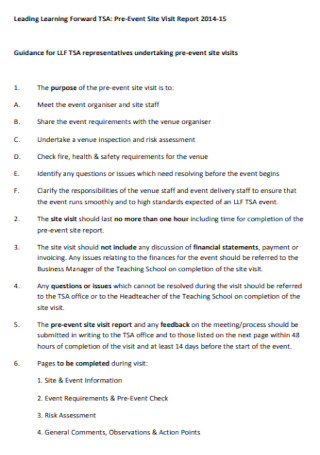
Pre-Event Site Visit Report Example in PDF
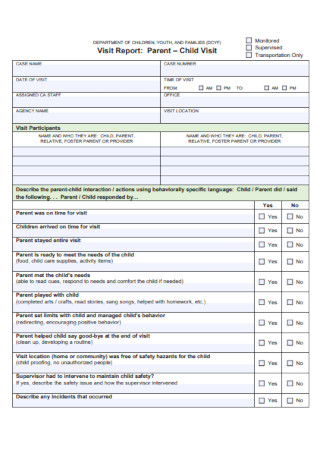
Sample Parent Visit Report Format
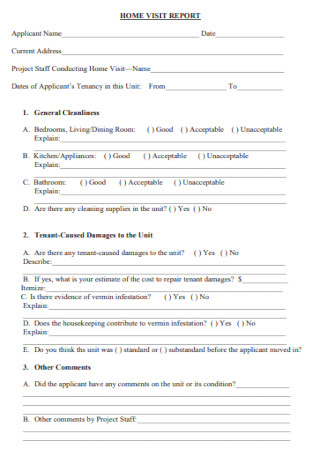
Home Tour Visit Report Template
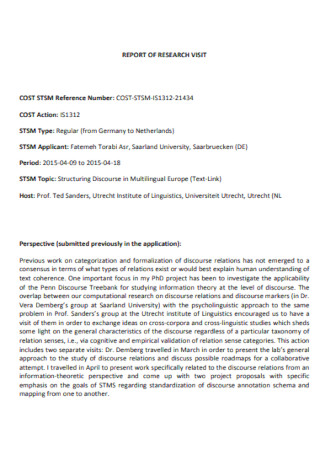
Report of Research Visit
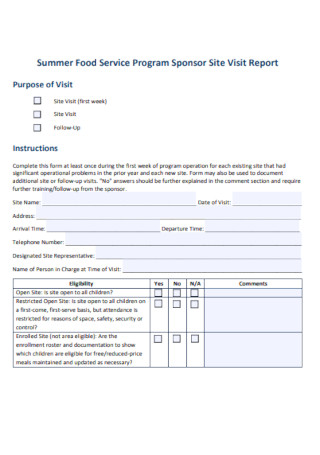
Daily Food Sponsor Visit Report Example
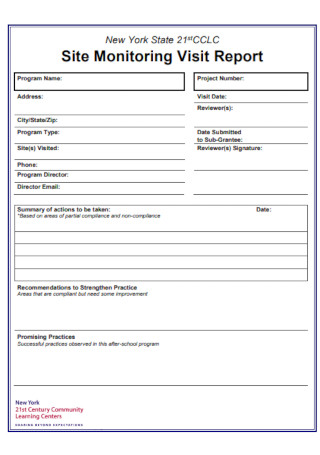
Sample Civil Site Monitoring Visit Report
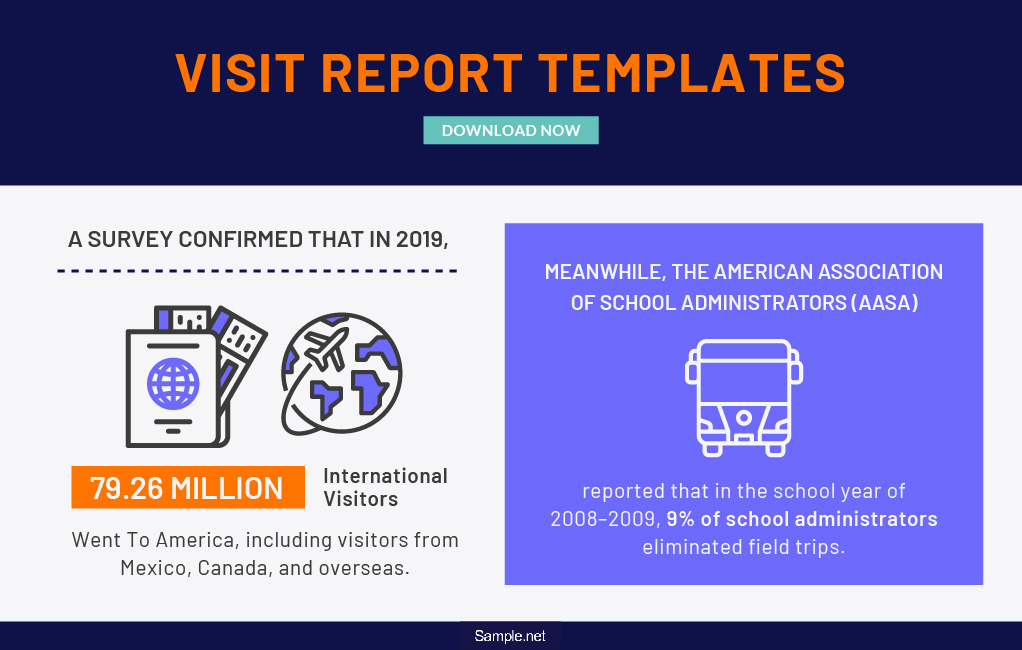
Why Are Visit Reports Important?
Step 1: determine your purpose, step 2: be observant and write what happened, step 3: reflect on your visit, step 4: download a template and insert the details, step 5: organize details according to the format.
- Site visit report
- Business visit report
- Field trip visit report
- Industrial visit report
- Monitoring visit report

- Define the Purpose: Clearly state the visit’s objectives and expected outcomes. For example, the purpose of a Training Report may include identifying partnership opportunities.
- Collect Information: Take detailed notes during the visit, and use photos or videos to supplement your observations.
- Organize Data: Categorize the information into sections such as background, observations, and analysis.
- Draft the Report: Begin with an introduction, followed by detailed observations, analysis, and end with a summary and recommendations.
- Review and Finalize: Proofread for accuracy and clarity, ensuring the report follows the planned structure and incorporates stakeholder feedback. You may also see Lab Report
- Introduction: State the purpose, date, duration, and participants involved. For instance, a Construction Site Visit Report should specify the project stage being assessed.
- Site Description: Provide a detailed description of the site, current conditions, and relevant background information.
- Observations: Offer a detailed account of activities, notable events, and any issues encountered.
- Analysis: Interpret the observations, relating them to the visit objectives and providing insights.
- Conclusion and Recommendations: Summarize key findings and provide recommendations for future actions or improvements. You may also see Technical Report
- Pre-Visit Preparation: Understand the visit’s purpose and objectives, gathering necessary information beforehand.
- Data Collection: Take comprehensive notes during the visit and use multimedia tools to document observations.
- Data Organization: Organize the collected data into coherent sections, highlighting significant observations.
- Report Drafting: Write an introduction, detailed body sections covering observations and analyses, and a conclusion with recommendations.
- Review and Finalization: Proofread for accuracy and clarity, ensuring the report meets its objectives and incorporates stakeholder feedback. You may also see Police Report
- Research: Understand the customer’s needs, preferences, and background information.
- Planning: Schedule the visit, prepare an agenda, and coordinate with relevant team members. You may also see Social Media Report
- Materials Preparation: Gather all necessary documents, presentations, and product samples.
- Team Briefing: Brief your team on the visit’s objectives, roles, and responsibilities.
- Follow-Up: Plan post-visit actions, such as sending a summary email and addressing any customer queries. This approach can be applied to a Home Visitation Report to ensure thorough preparation and follow-up.
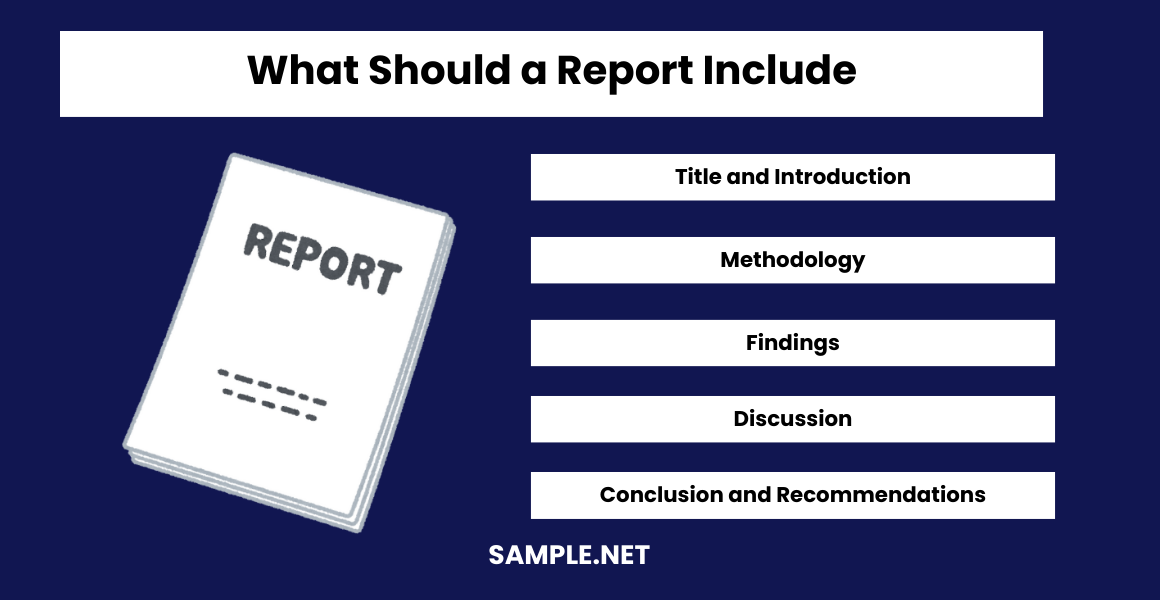
- Title and Introduction: Clearly state the report’s title and provide an overview of its purpose and scope. For example, an Internship Report should highlight the intern’s role and learning objectives.
- Methodology: Describe the methods used to collect and analyze data.
- Findings: Present detailed findings, supported by data and observations. You may also see Weather Report
- Discussion: Analyze the findings, discussing their implications and significance.
- Conclusion and Recommendations: Summarize key insights and provide actionable recommendations for future actions. This format is equally effective for a School Visit Report to convey the visit’s outcomes comprehensively.
What does the site visit report example cover?
Share this post on your network, you may also like these articles, medical report.
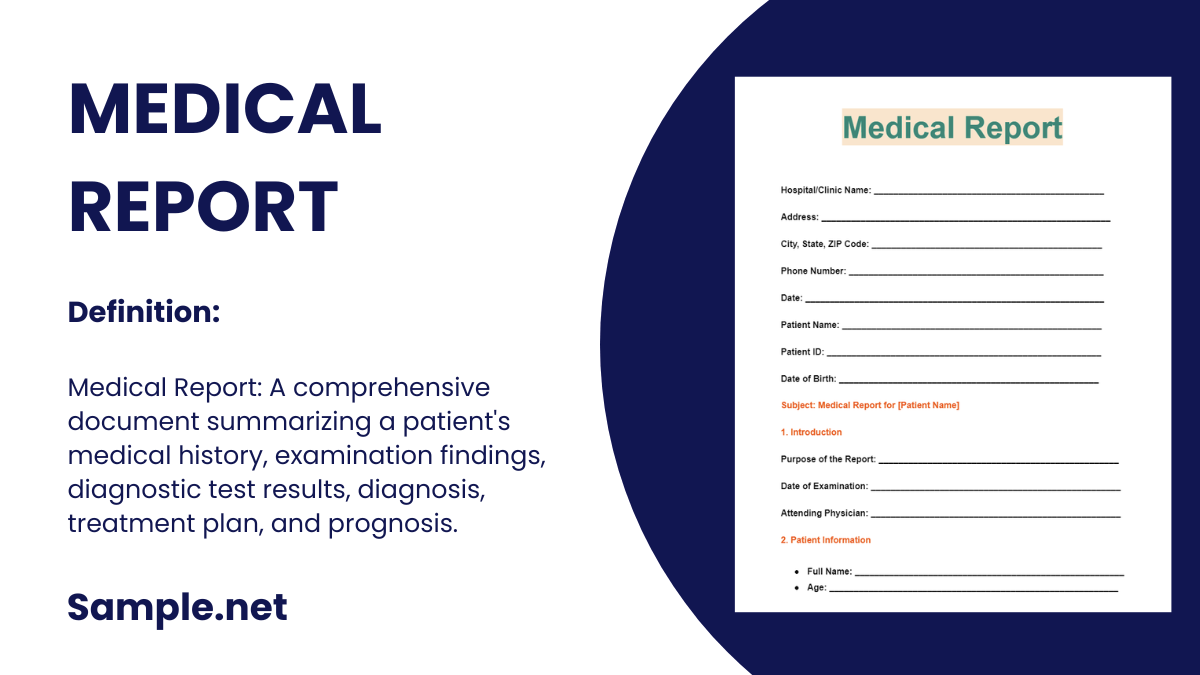
In this comprehensive guide, we will explore the essentials of creating an effective Medical Report. Whether you are a healthcare professional or need to understand how to document medical…
School Project Proposal
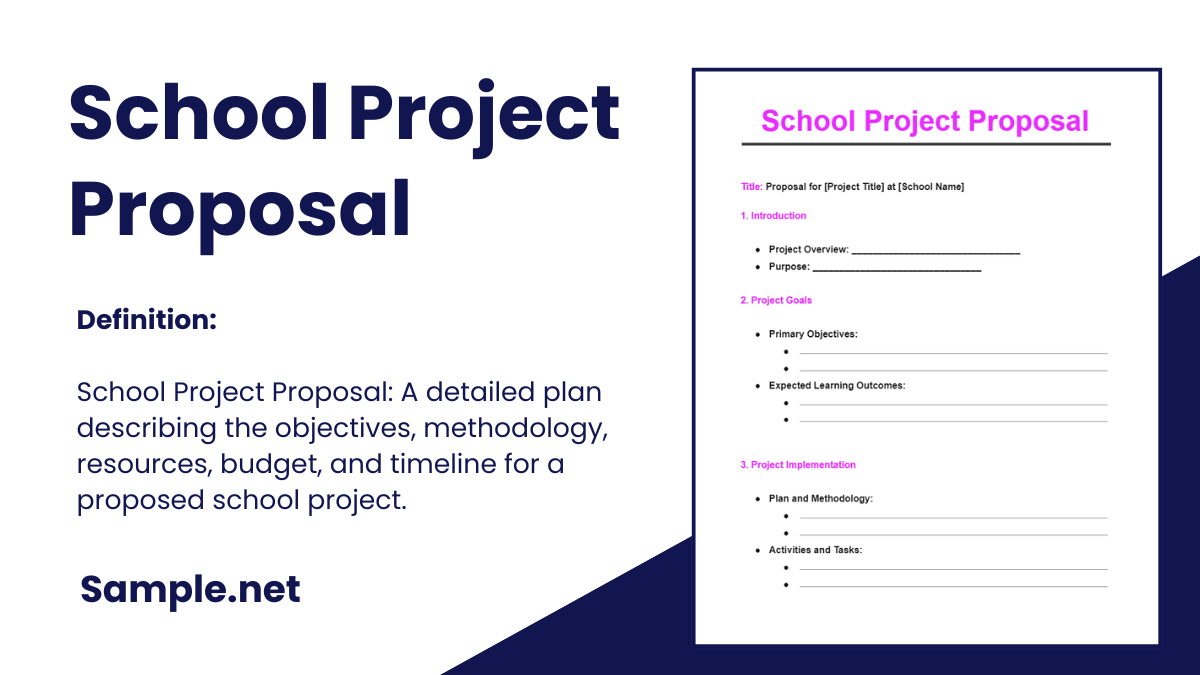
In this comprehensive guide, we will explore the essentials of crafting an effective School Project Proposal. Whether you are a student, teacher, or administrator, this guide provides clear instructions,…
browse by categories
- Questionnaire
- Description
- Reconciliation
- Certificate
- Spreadsheet
Information
- privacy policy
- Terms & Conditions

FAQs: Site Visit Observation
Observer on an acen site visit team.
An Observer on a site visit team is a representative from a nursing program beginning its initial or continuing accreditation review process. The Observer accompanies the peer evaluators on a site visit team during the review of a nursing program’s continuing accreditation site visit. The Observer may attend meetings with college administrators, faculty, staff, and students; review documents in the Repository; tour educational and clinical facilities; and observe the site visit team’s interactions. However, Observers are not permitted to ask questions during interviews nor interfere with the site visit team’s agenda.
The purpose of the Observer experience is to broaden the program representative’s knowledge of the site visit experience through immersive engagement in site visit activities including pre-visit functions and post-visit team and program responsibilities.
The individual accompanying the peer evaluators on a site visit team as an Observer will need to complete the ACEN Peer Evaluator online training prior to going on the visit. The person will be provided a login and will earn continuing education credits for completing the online training. In addition, the Observer should read the program’s Self-Study Report prior to the site visit to gain a better understanding of the program.
The Observer is responsible for all expenses associated with a site visit (e.g., travel, lodging, meals, etc.). The Observer is expected to make his/her own travel arrangements and to inform the host nursing program and site visit Team Chair regarding those arrangements. It is customary for the host nursing program to meet the peer evaluators at the prearranged airport, train station, or bus station and transport the peer evaluators to the place of lodging. Typically, it is possible to include the Observer in these onsite travel arrangements if it is coordinated between the program and the team chair. If onsite travel for the Observer is not coordinated with the program, the Observer will be responsible for their own onsite travel arrangements.
The prospective Observer should complete the Online Form . In addition, the prospective Observer must include his/her curriculum vitae with the submission of the Observer Intake Form. Upon receipt of the Form and the prospective Observer’s curriculum vitae, the ACEN staff will review the documents and contact the prospective Observer within four weeks of submission.
ACEN Partner

ACEN Affiliates

The Accreditation Commission for Education in Nursing (ACEN) supports the interests of nursing education, nursing practice, and the public by providing specialized accreditation for all levels of nursing education and transition-to-practice programs.
Accreditation Commission for Education in Nursing, Inc. 3390 Peachtree Road NE, Suite 1400 Atlanta, GA 30326
Sign up for the ACEN newsletter BRIDGES for accreditation news and updates.

Evaluation Site Visits – Seeing is Knowing
- Posted on April 3, 2019
- In Data Collection , Evaluation
Gathering evaluative information about a program or initiative often relies upon evaluators physically visiting the program’s location in order to observe program operations, to collect evidence of the program’s implementation and outcomes, and to interview staff and program participants. The empirical and observational nature of site visits offer evaluators a unique lens through which to “see” what the program actually is, and how it attempts to achieve the desired outcomes it hopes to achieve.
In their influential article, “Evaluative Site Visits: A Methodological Review,” American Journal of Evaluation, Vol. 24, No. 3, 2003, pp. 341–352, Lawrence, Keiser, and Levoie note that, “An evaluative site visit occurs when persons with specific expertise and preparation go to a site for a limited period of time and gather information about an evaluation object either through their own experience or through the reported experiences of others in order to prepare testimony addressing the purpose of the site visit.” Unlike case studies, which are of longer duration and often of greater depth, and which seek to describe in detail the instance or phenomena under study, site visits are of limited time duration, and are focused on gathering data that ultimately will inform judgement about a program’s worth/value. Site visits typically involve the use of a number of qualitative methods (e.g., individual and focus group interviews, observations, document review, etc. For more information on the kinds of data that site visits permit, see our previous blog post “Just the Facts: Data Collection.”
Michael Quinn Patton summarizes the essential elements of an evaluation site visit:
- Competence– Ensure that site‐visit team members have skills and experience in qualitative observation and interviewing. Availability and subject matter expertise does not suffice.
- Knowledge– For an evaluative site visit, ensure at least one team member, preferably the team leader, has evaluation knowledge and credentials.
- Preparation– Site visitors should know something about the site being visited based on background materials, briefings, and/or prior experience.
- Site participation– People at sites should be engaged in planning and preparation for the site visit to minimize disruption to program activities and services.
- Do no harm– Site‐visit stakes can be high, with risks for people and programs. Good intentions, naiveté, and general cluelessness are not excuses. Be alert to what can go wrong and commit as a team to do no harm.
- Credible fieldwork– People at the site should be involved and informed, but they should not control the information collection in ways that undermine, significantly limit, or corrupt the inquiry. The evaluators should determine the activities observed and people interviewed, and arrange confidential interviews to enhance data quality.
- Neutrality– An evaluator conducting fieldwork should not have a preformed position on the intervention or the intervention model.
- Debriefing and feedback– Before departing from the field, key people at the site should be debriefed on highlights of findings and a timeline of when (or if) they will receive an oral or written report of findings.
- Site review– Those at the site should have an opportunity to respond in a timely way to site visitors’ reports, to correct errors and provide an alternative perspective on findings and judgments. Triangulation and a balance of perspectives should be the rule.
- Follow-up– The agency commissioning the site visit should do some minimal follow‐up to assess the quality of the site visit from the perspective of the locals on site.
Lawrence, Keiser, and Levoie argue that evaluative site visits are not merely a venue in which a range of predominately qualitative methodologies are used, but a specific kind of methodology , which is distinguished by its use of observation. “We believe site visit methodology is based on ontological beliefs about the nature of reality and epistemological beliefs about whether and how valid knowledge can be achieved. Ontologically, in order to conduct site visits the evaluator must assume that there is a reality that can be seen or sensed and described. Epistemologically, site visits are based in the belief that site visitors are legitimate, sensing instruments and that they can obtain valid information through first-hand encounters with the object being evaluated.”
Accordingly, site visits are where evaluators can get “the feel” of what a program is and does. As a result, site visits are a critical means through which evaluators gather and interpret data with which to make judgements about the value and effects of a program.
“Evaluative Site Visits: A Methodological Review,” Frances Lawrenz, Nanette Keiser, and Bethann Lavoie, American Journal of Evaluation, Vol. 24, No. 3, 2003, pp. 341–352.
See Michael Quinn Patton quoted in Editors’ Note , Randi K. Nelson and Denise L. Roselan, New Directions in Evaluation , December, 2017
“Using Qualitative Interviews in Program Evaluations”
Conducting and Using Evaluative Site Visits: New Directions for Evaluation, Number 156, February 2018
“Developmental Evaluation: Evaluating Programs in the Real World’s Complex and Unpredictable Environment”
Glitches in Philanthropy?
Talking back to foundations, recommended posts.

What is Evaluation and Why Do It?

The Post-Pandemic Future for Nonprofits

Providing Timely Information: Program Monitoring
Program evaluation essentials for non-evaluators.
Please enter your information below to receive a copy of this whitepaper.
- Name * First Last
- Phone This field is for validation purposes and should be left unchanged.
Preparing for a Program Evaluation
Logic modeling.
- Name This field is for validation purposes and should be left unchanged.
Sample Program Evaluation Report
- Comments This field is for validation purposes and should be left unchanged.
Explore the universe for free in the heart of Los Angeles!

Griffith Observatory is open today from 12:00 p.m. to 10:00 p.m.
Thursday, June 13, 2024
Local Noon – 12:54 p.m.
Sunset – 8:07 p.m.
Explore the Observatory

Samuel Oschin Planetarium
Travel to the farthest reaches of the universe and into the microscopic building blocks of life. Live presentations immerse you in the wonder and meaning of the cosmos.

People have always looked at the sky and wondered what is really out there. Our 60 exhibits make you an observer and show you what we know.

Griffith Park
The largest urban-wilderness municipal park in the United States, Griffith Park is filled with trails, trees, trains, attractions… and the Hollywood Sign!

Observing the Sky
Anyone can be an observer, and we are here to help. You may look through our free public telescopes or use our astronomical information to observe from your own backyard. Check out the weekly Sky Report to see what you can observe in Los Angeles.
Programs and Events

Daily Programs
Live shows in the Samuel Oschin Planetarium, live Tesla Coil demonstrations, and your chance to observe with our public telescope observing are offered every day. Check the schedule!

Recurring Events
Virtual and in-person programs – including public star parties, All Space Considered , and the Sunset Walk-and-Talk – return each month as reliably as the phases of the Moon!

Special Events
Griffith Observatory reliably connects you to unusual sights in the sky, the changing seasons, visiting astronomers and their latest discoveries, and more.

Planning a Visit? We Can Help!
Located on the south slope of Mount Hollywood in Griffith Park, the Observatory is literally in the center of metropolitan Los Angeles. While public transportation is the easiest way to visit, you may also walk, bike, drive, or take a shared-ride service up to the Observatory. There’s paid parking near the Observatory and free parking downhill. Be sure to plan your visit in advance, because roads and parking get busy.
Upcoming Events

June 15, 2024
Public Star Party – June 15, 2024
Once a month, the Observatory partners with local telescope groups to share their telescopes and knowledge with the public. With dozens of telescopes on the lawn, there's always something to see!
2:00 PM – 9:45 PM
Griffith Observatory

June 20, 2024
All Space Considered with Sabrina Stierwalt – June 2024
Griffith Observatory broadcasts this public program live from the Leonard Nimoy Event Horizon Theater on the third Thursday of every month. Join the Observatory's curatorial staff as they examine and explain the most-talked-about subjects in astronomy and space science. It is free to attend in-person or stream on YouTube.
7:00 PM – 8:30 PM
Leonard Nimoy Event Horizon Theater & Online
July 13, 2024
Public Star Party – July 13, 2024
About the observatory.
Griffith Observatory is southern California’s gateway to the cosmos! Visitors may look through telescopes, explore exhibits, see live shows in the Samuel Oschin Planetarium, and enjoy spectacular views of Los Angeles and the Hollywood Sign.
Griffith Observatory 2800 East Observatory Road Los Angeles, CA 90027 (213) 473-0800
Weekday (Tuesday - Friday) Hours Open 12:00 noon - 10:00 p.m.
Weekend (Saturday - Sunday) Hours Open 10:00 a.m. - 10:00 p.m.
Closed Monday

.cls-3{fill:#007faa;}.cls-4{fill:none;stroke:#046b99;stroke-miterlimit:10;} dot gov icon Official websites use .gov
A .gov website belongs to an official government organization in the United States.
.cls-1{fill:#549500;}.cls-2{fill:none;stroke:#458600;stroke-miterlimit:10;} https icon Secure websites use HTTPS
A small lock or https:// means you’ve safely connected to a .gov website. Share sensitive information only on official, secure websites.
NOAA Planet Stewards is now accepting proposals for 2023/2024 project funding!
2022 Sea Level Rise Technical Report
Updated projections available through 2150 for all U.S. coastal waters.
The Sea Level Rise Technical Report provides the most up-to-date sea level rise projections available for all U.S. states and territories; decision-makers will look to it for information.
This multi-agency effort, representing the first update since 2017, offers projections out to the year 2150 and information to help communities assess potential changes in average tide heights and height-specific threshold frequencies as they strive to adapt to sea level rise.
About This Report
The technical report is the latest product of the Sea Level Rise and Coastal Flood Hazard and Tools Interagency Task Force. Twenty-three co-authors contributed to the development of the report, representing senior scientists and experts from academic institutions and the following agencies:
- Environmental Protection Agency
- U.S. Geological Survey
- Federal Emergency Management Agency
- Army Corps of Engineers
Additional support was provided by the Department of Defense Strategic Environmental Research and Development Program .
Updated Sea Level Rise Projections: Data and Tools
- Download Technical Report Data
- NOAA: Digital Coast Sea Level Rise Viewer
- NOAA: Adapting Stormwater Management for Coastal Floods
- NOAA: Coastal County Snapshots
- NOAA: Sea Level Rise API URL Builder
- NASA Interagency Sea Level Rise Scenario Tool
Understanding and Applying Updated Projections
- Companion Application Guide for this Report
- Video: Key Takeaways for Sea Level Rise Projections
- Companion Podcast
- Companion Infographics
- Frequently Asked Questions
- NOAA Monthly High Tide Flooding Reports and Annual Reports
- Learn about Sea Level Rise
More Information Related to Report
- 2017 Sea Level Rise Technical Report
- Fifth National Climate Assessment
- Sixth Assessment Report (AR6)
Four key takeaways from the report:
The next 30 years of sea level rise, sea level along the u.s. coastline is projected to rise, on average, 10 - 12 inches (0.25 - 0.30 meters) in the next 30 years (2020 - 2050), which will be as much as the rise measured over the last 100 years (1920 - 2020). sea level rise will vary regionally along u.s. coasts because of changes in both land and ocean height., more damaging flooding projected, sea level rise will create a profound shift in coastal flooding over the next 30 years by causing tide and storm surge heights to increase and reach further inland. by 2050, “moderate” (typically damaging) flooding is expected to occur, on average, more than 10 times as often as it does today, and can be intensified by local factors., emissions matter, current and future emissions matter. about 2 feet (0.6 meters) of sea level rise along the u.s. coastline is increasingly likely between 2020 and 2100 because of emissions to date. failing to curb future emissions could cause an additional 1.5 - 5 feet (0.5 - 1.5 meters) of rise for a total of 3.5 - 7 feet (1.1 - 2.1 meters) by the end of this century., continual tracking, continuously tracking how and why sea level is changing is an important part of informing plans for adaptation. our ability to monitor and understand the individual factors that contribute to sea level rise allows us to track sea level changes in a way that has never before been possible (e.g., using satellites to track global ocean levels and ice sheet thickness). ongoing and expanded monitoring will be critical as sea levels continue to rise., dive deeper into the four key takeaways from the report:.
- KEY TAKEAWAYS:
The Next 30 Years
Breaking it down:.
Rise in the next three decades is anticipated to be, on average: 10 - 14 inches (0.25 - 0.35 meters) for the East coast; 14 - 18 inches (0.35 - 0.45 meters) for the Gulf coast; 4 - 8 inches (0.1 - 0.2 meters) for the West coast; 8 - 10 inches (0.2 - 0.25 meters) for the Caribbean; 6 - 8 inches (0.15 - 0.2 meters) for the Hawaiian Islands; and 8 - 10 inches (0.2 - 0.25 meters) for northern Alaska.
This report provides greater confidence in estimates of sea level rise out to 2050 than the previous 2017 report because of advances in sea level science, as captured in the Intergovernmental Panel on Climate Change’s Sixth Assessment Report, and the use of multiple lines of evidence: both the trends in the amount of relative sea level rise already observed and the models of future sea level rise closely match one another in the next 30 years.

Caption Title
Caption description. A full transcript is available that presents these results in plain text. Download this infographic.
More Damaging Flooding
With this shift, “moderate” (typically damaging) flooding will occur more frequently in 2050 (4 events/year) than “minor” (mostly disruptive, nuisance, or high tide) flooding occurs today (3 events/year).
“Major” (often destructive) flooding is expected to occur five times as often in 2050 (0.2 events/year) as it does today (0.04 events/year).
These averages will be exceeded in some locations across the U.S. because of regional and year-to-year variability.
Coastal flooding can be exacerbated by many factors that are not included in these estimates, such as rainfall, river discharge, wave impacts like coastal erosion, and existing infrastructure.
Without additional risk reduction measures, U.S. coastal infrastructure, communities, and ecosystems will face increased impacts.

Current and future emissions will determine the amount of additional rise in the future: the greater the emissions, the greater the warming, and the greater the likelihood of higher sea levels.
Above 5.5°F (3°C) of global warming, much greater sea level rise becomes possible for the U.S. and globally because of the potential for rapid melting of ice sheets in Greenland and Antarctica. The amount of additional warming required to trigger this is unknown because ice sheet instability is difficult to model and there is great variability in current modeling approaches.
Efforts are underway to improve our understanding of ice sheet dynamics in order to more precisely project future sea level rise in response to continued emissions and warming.

U.S. federal agencies performing continuous monitoring and assessments of key sea level rise source contributions affecting U.S. coastlines — such as ocean heat content, ice mass loss from Greenland and Antarctica, vertical land motion, and changes in the Gulf Stream — can provide early indications of change in the trajectory of sea level rise, which can inform shifts in adaptation planning.

This Technical Report is the latest product of the Interagency Sea Level Rise and Coastal Flood Hazard and Tool Task Force, which includes members from the following agencies:
Use and edit template for free
Site observation report template: easily customisable.
Start with a free 30-day trial. No credit card required.
A site observation report captures what a worker or inspector observes on site at a particular time and date. It's an important document to help both companies and workers understand the day's activities and overall progress. It also keeps commercial and production teams updated with an accurate view of what's happening on site.
This site observation report template is free to use and makes the process of capturing and recording everything happening on site quick, easy and organised.
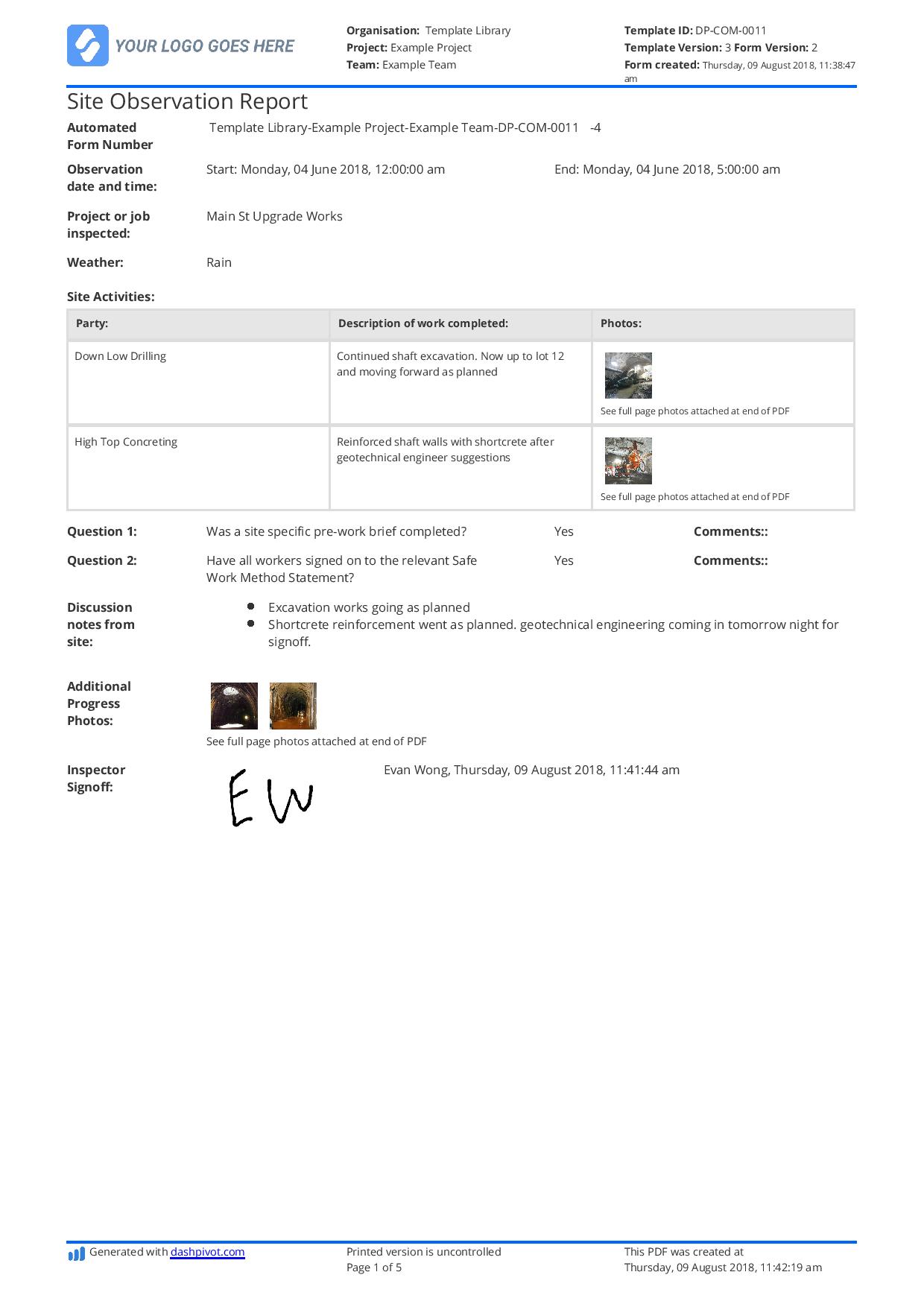
Trusted by over 250,000 people from built-world companies of all sizes
~200 employees
~20 employees
~25,000 employees
~40 employees
~10,000 employees
~1,500 employees
~35,000 employees
Preview this site observation report template below
Try customising this site observation report template in the interactive demo and downloading as PDF.
Use this site observation report template for free.
This site observation report template was generated with dashpivot.
A system like Dashpivot can streamline how you conduct reports with powerful functionality so your teams are always in the loop on site progress.
- Access and complete site observation reports from anywhere - on laptop, mobile or tablet.
- Take and add supporting photos and attachments to the form in the office or directly on site.
- Download, print or send your site observation reports as custom branded excel or PDF documents.
- Instantly format your completed observation reports into list or register view.
- Edit or add observation report fields with intuitive drag-and-drop functionality.
Other popular templates you can use and customise for free
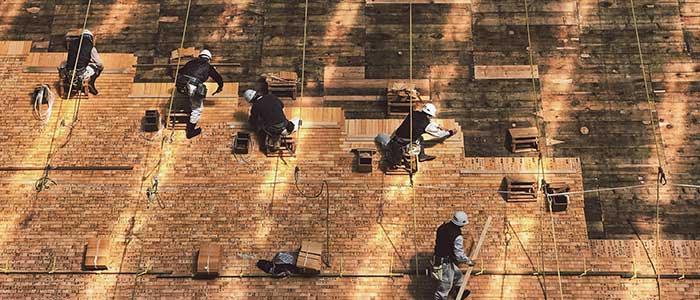
Construction Site Daily Progress Report template
Better record and track daily progress to avoid end of project blowouts and headaches.
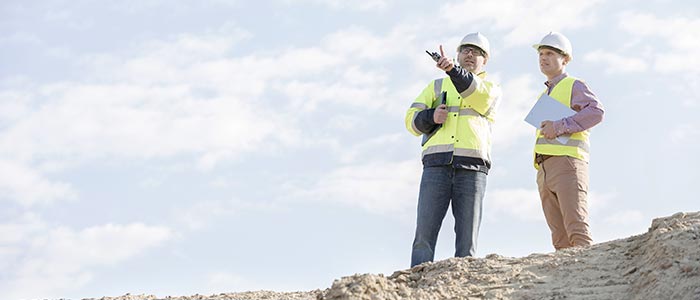
Delay analysis report template
Detail those site delay events with this flexible template.

Meeting minutes template
Capture, record and organise those meeting minutes.
Ensure you keep everyone in the loop with reliable site observation reports
Your site observation report keeps stakeholders informed about progress and helps everyone understand the current situation on site - and internally, it ensures all teams are on the same page.
Poorly structured reports can lead to miscommunication, unnecessary back and forth between teams and a lot of wasted time. A well formatted site observation report template provides useful, timely information about what's actually happening on site.
It's important to include these key sections for any good report:
- Site observation details (such as the date, time and weather)
- Project details
- List of site activities (include description of works completed)
- Site photos (include additional progress photos)
- Discussion notes from the site
- Signoff field for the inspector to complete the report
Alternatively, you can use and download our site observation report template to get started immediately on reporting.
Sitemate builds best-in-class software tools for built world companies.

IMAGES
VIDEO
COMMENTS
The necessary reporting fields include: The observation date and time. The project or job being inspeted. The conditions (weather etc.) Inspector signoff once the report is completed. Outside of these details, the report will cover any new or observed findings: Site activities. Party, description of work completed and supporting photos.
A site visit report is a formal document that provides a detailed account of a visit to a particular location or project site. It records the observations, activities, conditions, discussions, and any deviations or issues identified during the visit. The report often includes recommendations or action items based on these findings.
Here's a breakdown of what should typically be included in a site visit report report: Project Reference: The construction project name and reference ID. Location: The exact address or co-ordinates of the construction site. Date of Site Visit: The specific date (s) when the visit was recorded. Prepared By: The name of the individual or team ...
The Site Visit Report Template is an organized slate for your site reporting needs. It is purposefully organized, with room to write observations and details for each of the vital fundamental metrics you're likely to explore on your site visit. Step 1 - Download the template. Step 2 - Print the template. Step 3 - Complete your report.
If your site visit report contains the following features, these explanations may help you gain a sense of the purpose of various sections: Title page. Include the title of the visit or project, name of the site, the date of the site visit, and your name and student number. You may also need to include your tutor's name, your tutorial group ...
From: Bill Hopkins and Dwight Harshbarger. Executive summary of site visit observations and recommendations. On June 22 - 24, 2005, we visited the Halliburton Gulf of Mexico Operations for purposes of a behavioral safety program site-review for CCBS Accreditation. A complete report of our site visit observations follows this summary.
1. Add a title page to the beginning of your report. The title should be the name of the visit and site, such as "Visit to Airplane Factory" or "Corporate Headquarters Visit Report." Under the title, include your name, your institution, and the date of the visit. Do not put any other information on this page.
A site visit analysis is a comprehensive report that summarizes the findings of a physical inspection of a potential development site. It includes information on the site's physical characteristics, location, surrounding area, demographic information, environmental impact, zoning regulations, traffic flow, and recommendations for development.
A summary of the final Site Visit Report will be sent to the recipient indicating the results of the visit. Where site visits identify or confirm significant performance problems, the Program Office may specify corrective actions to be taken by the recipient based on observations and conclusions drawn from the site visit.
18+ Site Visit Report Templates. There may come a time when you are tasked with visiting a particular industrial site to assess and gather as much information as you can regarding its operation, architecture, procedure, observation, management, safety, engineering, property, and current state.
As these observations provide an important addition to report findings, Magnolia Consulting follows several steps for successfully navigating site visit observations. Based on our experience, here are five key guidelines for successful site visit observations: Conduct an in-person study orientation. Conducting an in-person study orientation ...
The Impact of a Well-Constructed Site Visit Report: A well-constructed site visit report can profoundly impact a construction project in various ways, ensuring that all stakeholders remain informed and that the project stays on track. The significance of a thoroughly crafted report can be understood through its multi-faceted impact:
Use this standardised construction site visit report template to run well-documented reports digitally from on site via mobile or tablet with much more functionality than using Word or Excel to run site visits. 100% fully customisable construction site visit report template. Export your construction site visit report to PDF or CSV.
How-To Note: Planning and Conducting Site Visits. This resource describes practical steps and effective practices for planning and conducting a site visit. How-To Notes provide guidelines and practical advice to USAID staff and partners related to the Program Cycle. This note was produced by the Bureau for Policy, Planning and Learning (PPL).
A site visit methodology may look like this: you visit a site for a limited period of time and gather information through your own experience or through the reported experiences of others in order to find the answer to your research question. In addition to observation, interviews can also be employed to gather information.
A visit report is a document that records the details, observations, and outcomes of a business visit. It serves as a formal account of the activities and findings during the visit, helping businesses track progress, identify issues, and make informed decisions. This report typically includes the purpose of the visit, the individuals involved ...
The Observer is responsible for all expenses associated with a site visit (e.g., travel, lodging, meals, etc.). The Observer is expected to make his/her own travel arrangements and to inform the host nursing program and site visit Team Chair regarding those arrangements. It is customary for the host nursing program to meet the peer evaluators ...
Using the Site Monitoring Visit Report. The Site Monitoring Visit (SMV) Report has been developed to help ensure comprehensive and consistent monitoring of 21st Century Community Learning Centers (CCLC) in New York State. While this document is intended for use by program reviewers, it is also recommended for use by sub-grantees to (1) guide ...
AIA Document A201™-1997, General Conditions of the Contract for Construction (A201), addresses site visit requirements: "4.2.2 The Architect . . . will visit the site at intervals appropriate to the stage of the Contractor's operations (1) to become generally familiar with and to keep the Owner informed about the progress and the quality ...
Here's a sample format for your next Site Visit Report. Report Title: Site Visit Report Project Name: [Project's Name] Location of Site: [Site's Address] Date of Visit: [Date, e.g., September 13, 2023] Report Prepared By: [Your Name/Team's Name] 1. Introduction: A brief description of the site and the project. Mention any background information pertinent to the visit.
Michael Quinn Patton summarizes the essential elements of an evaluation site visit: Competence- Ensure that site‐visit team members have skills and experience in qualitative observation and interviewing. Availability and subject matter expertise does not suffice. Knowledge- For an evaluative site visit, ensure at least one team member ...
American Institutes for Research Level 4 and Level 5 School Monitoring Site Visit Protocol—3 about participating schools, as well as the continuation of School Redesign Grants annually.3 Figure 1 provides an example of two indicators and the 4‐point continuum within Turnaround
Check out the weekly Sky Report to see what you can observe in Los Angeles. View the sky report. Programs and Events. Daily Programs. ... While public transportation is the easiest way to visit, you may also walk, bike, drive, or take a shared-ride service up to the Observatory. There's paid parking near the Observatory and free parking downhill.
This Sea Level Rise Technical Report provides the most up-to-date sea level rise projections available for all U.S. states and territories; decision makers will look to it for information. This multi-agency effort, representing the first update since 2017, offers projections out to the year 2150 and information to help communities assess potential changes in average tide heights and height ...
It also keeps commercial and production teams updated with an accurate view of what's happening on site. This site observation report template is free to use and makes the process of capturing and recording everything happening on site quick, easy and organised. 100% fully customisable site observation report template.
We also invite you to visit Normandy American Cemetery in 2024. When planning travel, if you are the family member of an individual who is buried or memorialized at Normandy American Cemetery or if you are traveling with a World War II veteran, please email [email protected] and include that information in your email.